Greatest American candy bars of all time
Raising the bar
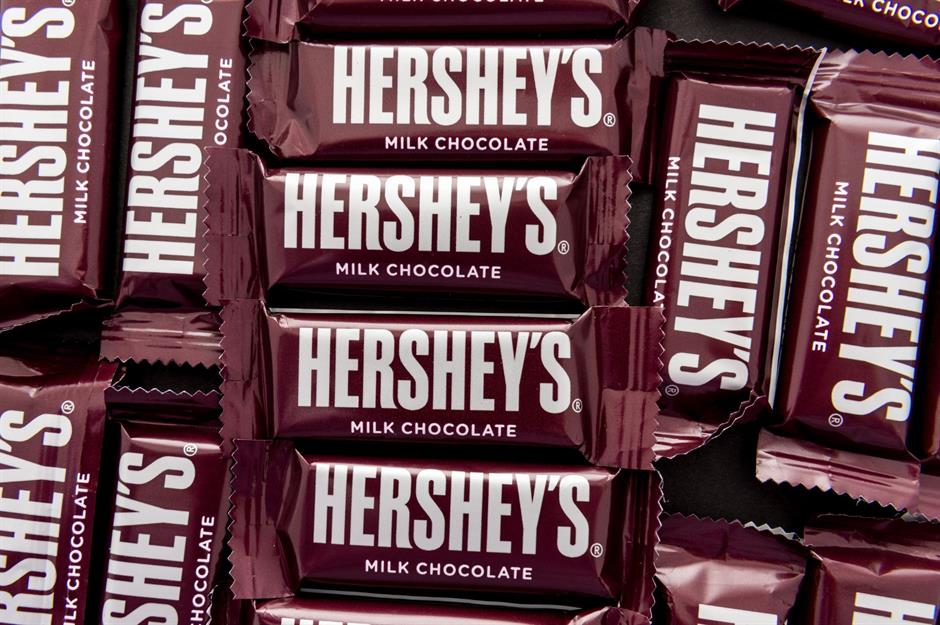
America’s love affair with candy bars began over a century ago – and it’s still going strong. New flavors and limited editions keep tempting shoppers, but a few timeless treats stand above the rest. From long-gone favorites like the Chicken Dinner and Seven Up to classics that continue to delight today, these iconic bars have left a lasting mark on the nation’s sweet tooth. Join us as we unwrap the most beloved candy bars in American history.
Click or scroll through our gallery to feast your eyes on the best candy bars of all time, counting down to the most iconic of all.
Our ranking is based on the popularity of each candy bar, taking into account sales, longevity and the reaction of the products at their time of release. The list is unavoidably subjective.
53. Goo Goo Cluster
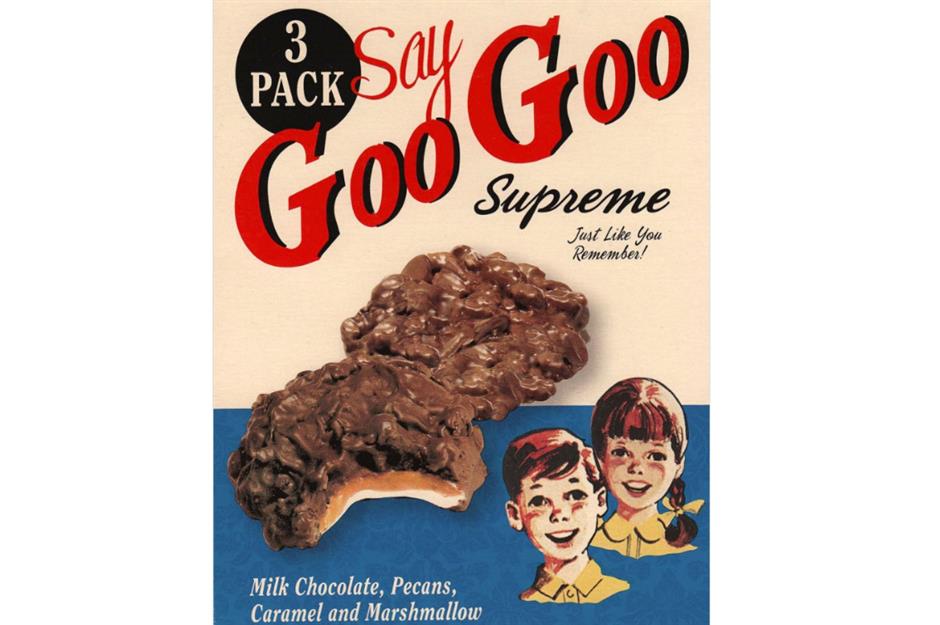
The candy bar named after the sound babies make, the Goo Goo Cluster was created in Nashville in 1912. It was the first combination candy and contained marshmallow nougat, caramel, roasted peanuts, and chocolate. The bar was marketed as 'a nourishing lunch for a nickel' during the 1920s and 1930s, and the recipe has never changed.
52. Ghirardelli chocolate squares

These iconic chocolate squares are little luxuries in perfectly wrapped bites – and they’ve earned a cult following for good reason. Founded in 1852 in San Francisco, Ghirardelli is one of America’s oldest chocolate makers, and its legacy shows in every bite. Each square offers a silky, rich flavour that feels just a touch indulgent, from intense 86% dark to creamy caramel-filled milk chocolate. They’re timelessly sophisticated.
51. Bit-O-Honey
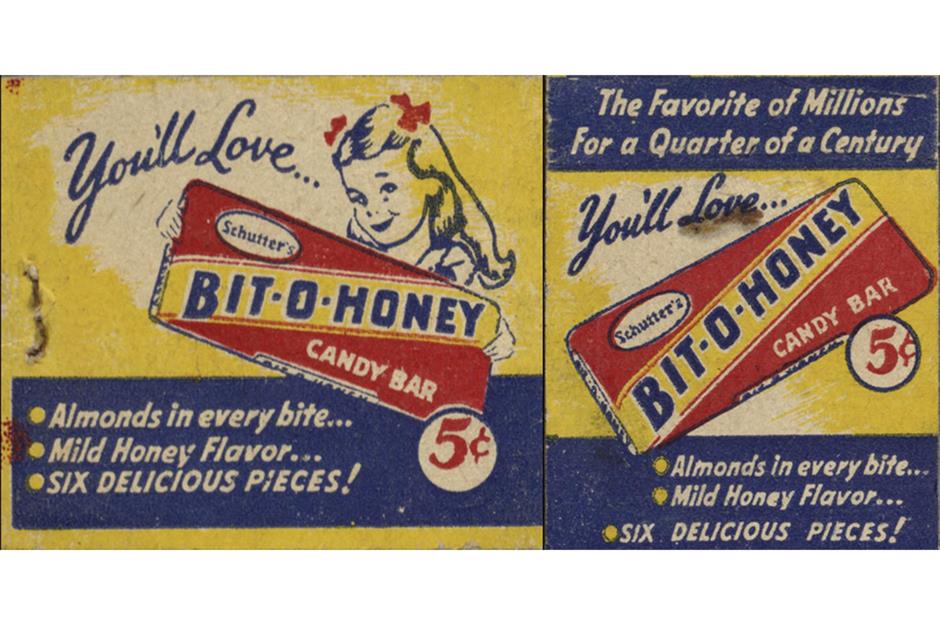
This honey and almond taffy bar dates all the way back to 1924, when it was launched by Chicago's Schutter-Johnson Company. It comes in six segments, divided by wax paper – which is useful, as it would be extremely chewy to bite into chunks. Much to the surprise of many, it's still on sale today and is now produced by Spangler Candy Company.
50. PB Max
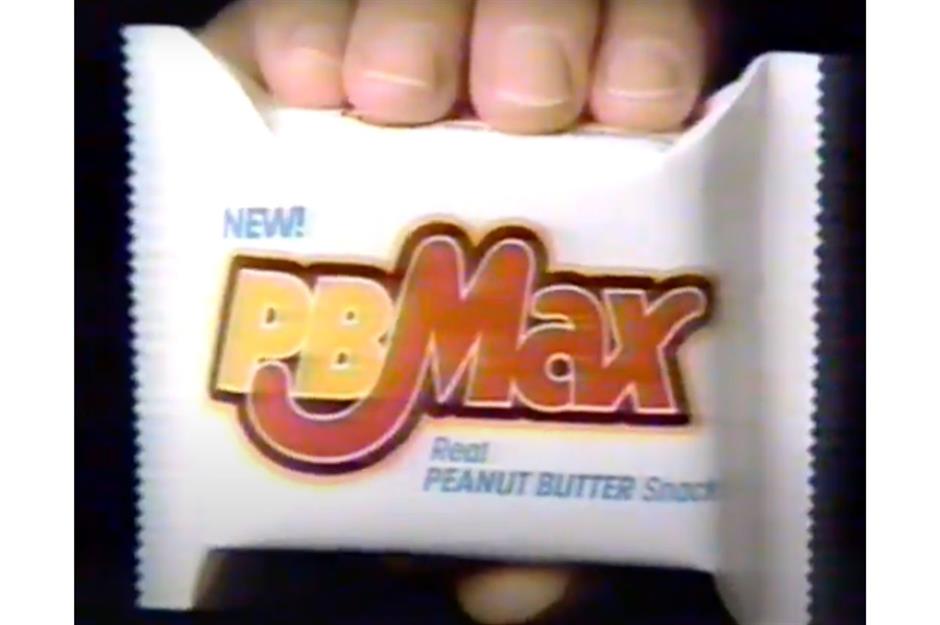
This peanut butter–packed bar may not have been around for very long (it was available from the late 1980s to mid-1990s), but PB Max continues to live on in many people's memories. The square-shaped bar featured a wholegrain cookie topped with peanut butter and finished with a coating of smooth milk chocolate.
49. Seven Up
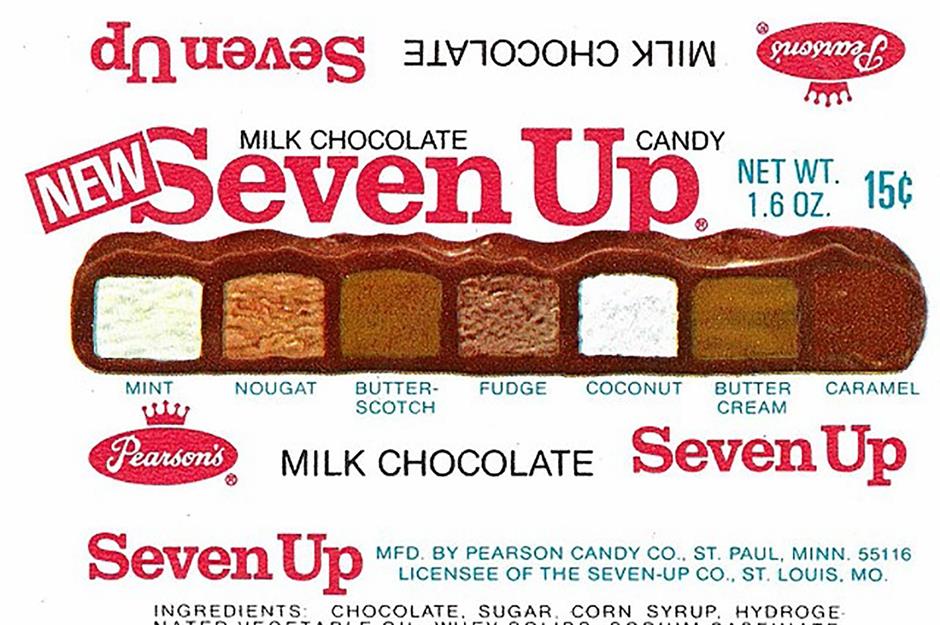
This 1930s invention was made up of seven separate chocolate segments, each with their own unique flavor. Combinations varied over the years, but flavors included Brazil nut, buttercream, caramel, cherry, coconut, fudge, and orange. Sadly, but also understandably, it was difficult to produce and was discontinued in 1979.
48. Milkshake
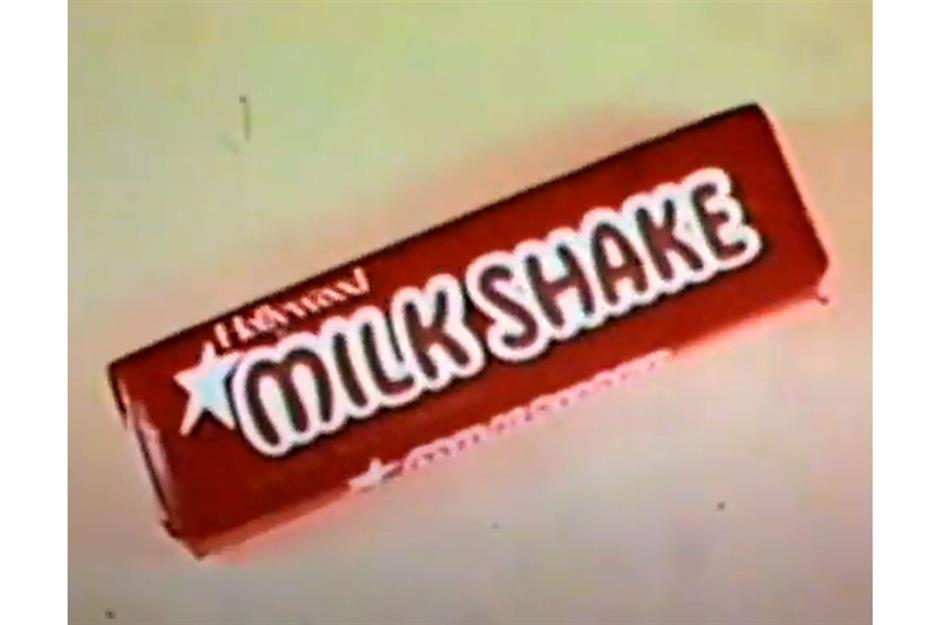
Creamy and delicious, Milkshake was first introduced in the 1920s. Intended to taste like a chocolate malt milkshake, the candy bar featured a nougat center which was finished with a caramel top and wrapped in a chocolate coating. It was produced by the Hollywood Candy Company and quickly became a popular choice, with many fans saying it tasted even better frozen. It was eventually discontinued in the 1980s and hasn’t resurfaced since.
47. Chicken Dinner
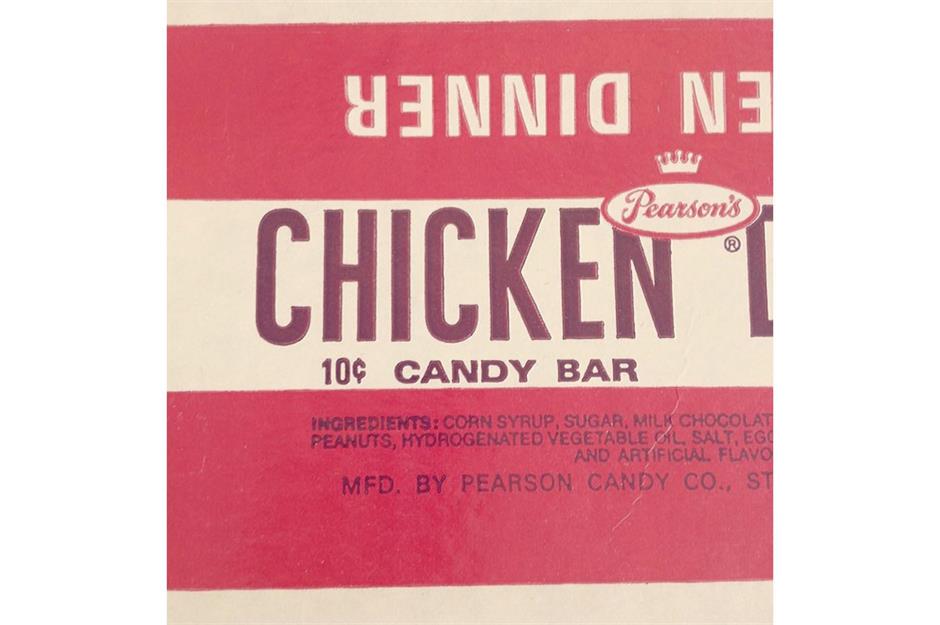
Thankfully, this candy bar tasted nothing like chicken. It was introduced by the Sperry Candy Company of Milwaukee in 1923, at a time when underprivileged families may have been lucky to have one meal per day, and comparing it to a whole dinner was an effective marketing tactic. It lasted up until the 1960s.
46. Bun
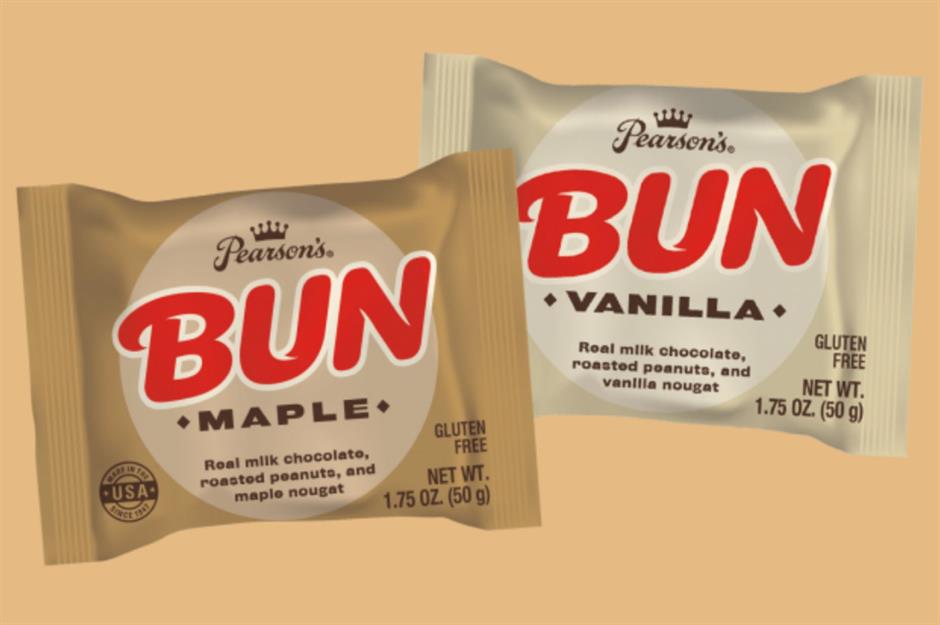
Purists will say these aren’t quite ‘bars,’ as they're more like big clusters, but Buns have satisfied those 3pm sugar cravings since the 1920s. Introduced by Indiana-based Wayne Bun Candy Company, these treats are now produced by Pearson’s Candy and continue to be loved for their peanut, milk chocolate, and creamy nougat combination. Fans can choose between real maple or vanilla.
45. Choco’Lite
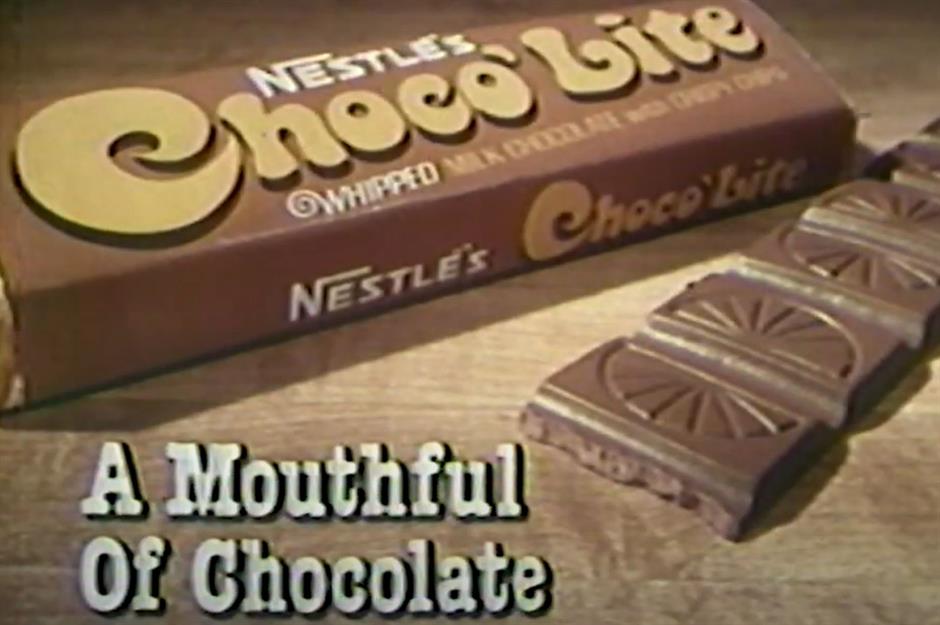
Can you remember the delicious, bubbly texture of this discontinued bar? Choco’Lite was one of Nestlé’s tastiest creations, landing on grocery store shelves in the 1970s. It featured a unique aerated chocolate, finished with crispy chips. The candy bar was a popular choice with kids and adults alike, but was pulled from production after a decade.
44. Peanut Chews
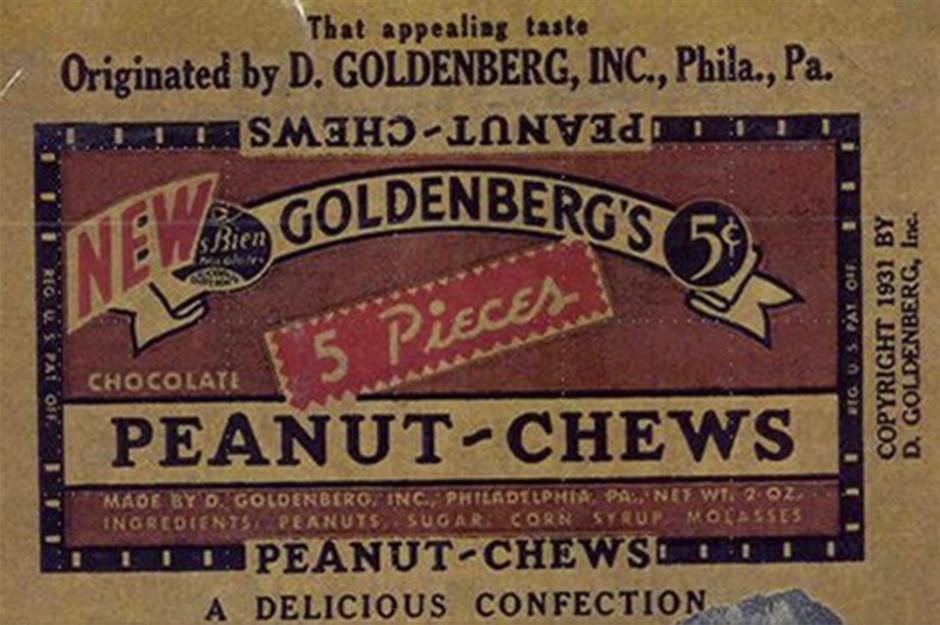
Over a century old, Peanut Chews was introduced by the Goldenberg Candy Company in 1917. The bar contains peanuts and molasses and is available with a dark chocolate or milk chocolate coating. When it first came out, it was a popular staple in soldiers’ rations, as it's so high in protein. In 2004, 'Goldenberg’s' logo was taken off the label, much to customers' confusion, before it was soon put back on.
43. York Peppermint patties
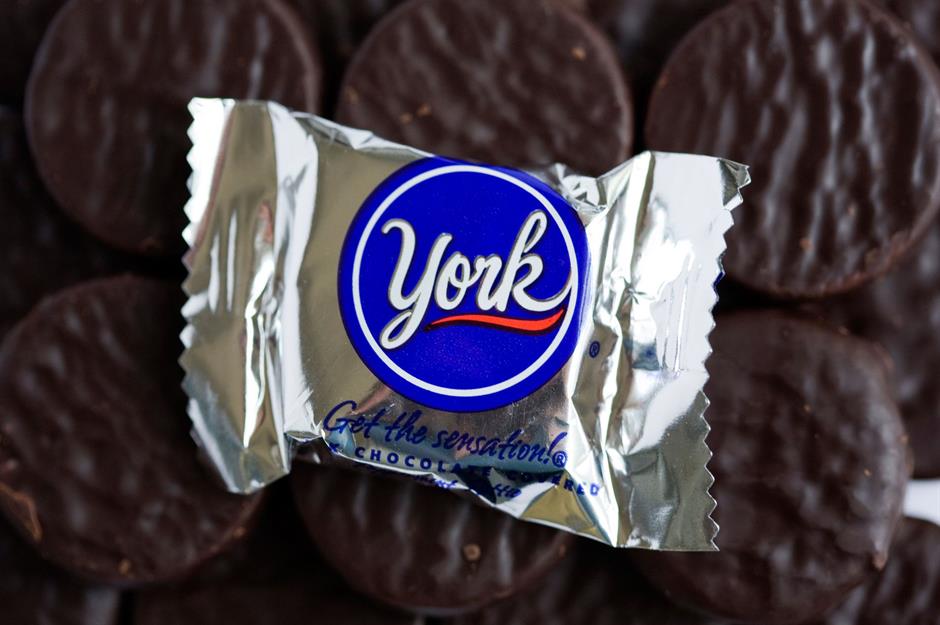
Defined by their sharp mint center and slightly sweet dark chocolate coating, York Peppermint Patties have been a nationwide favorite since 1940. Introduced by Pennsylvania-based brand York Cone Company, the treats eventually joined The Hershey Company in 1988 and continue to be loved today. These days you can find a handful of styles, including a miniature variety.
42. DeMet's Turtles
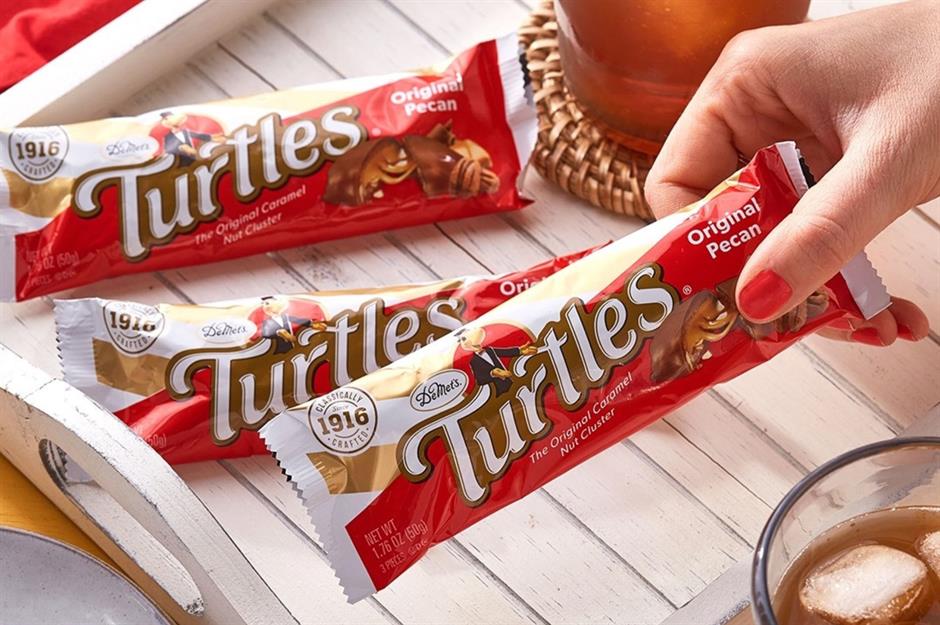
DeMet’s Turtles are a true classic – a sweet, salty, and nutty indulgence that’s been delighting candy lovers for generations. Founded in 1898 in Chicago, DeMet’s created the now-famous combination of buttery caramel, roasted pecans, and smooth milk chocolate shaped like a little turtle. It’s an irresistible mix of textures and flavors that hits every craving at once. They’re still produced today in a range of varieties, from dark chocolate to sea salt caramel.
41. Denver Sandwich
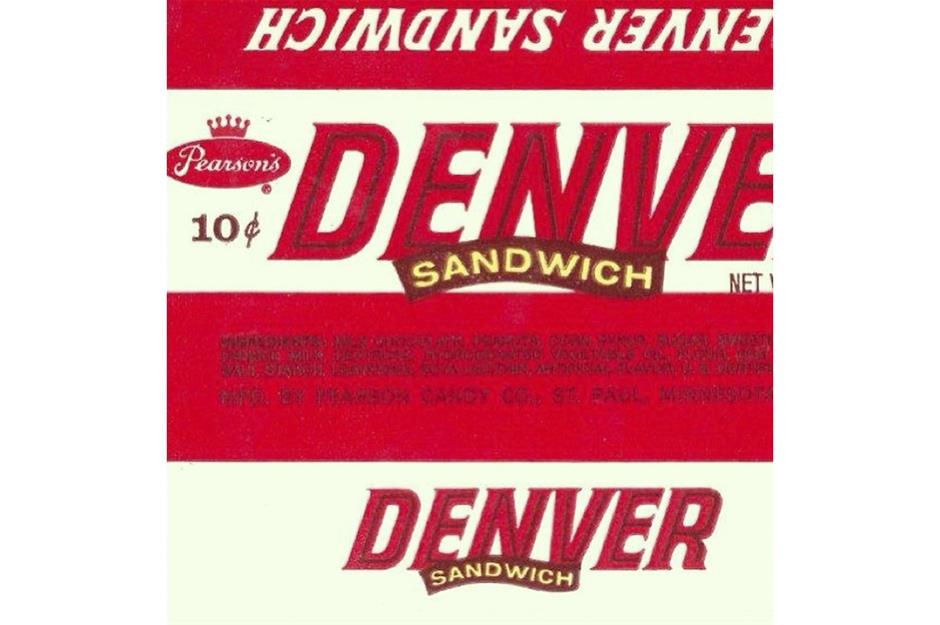
Neither from Denver nor a sandwich, this chocolate and peanut wafer bar was introduced by the Sperry Candy Company in the early 1930s. Described as a chocolate covered salted nut roll, it only cost 10 cents back in the day. However, when Pearson's Candy bought the Sperry Candy Company in 1962, it was dropped from production, along with the Chicken Dinner.
40. Reggie!
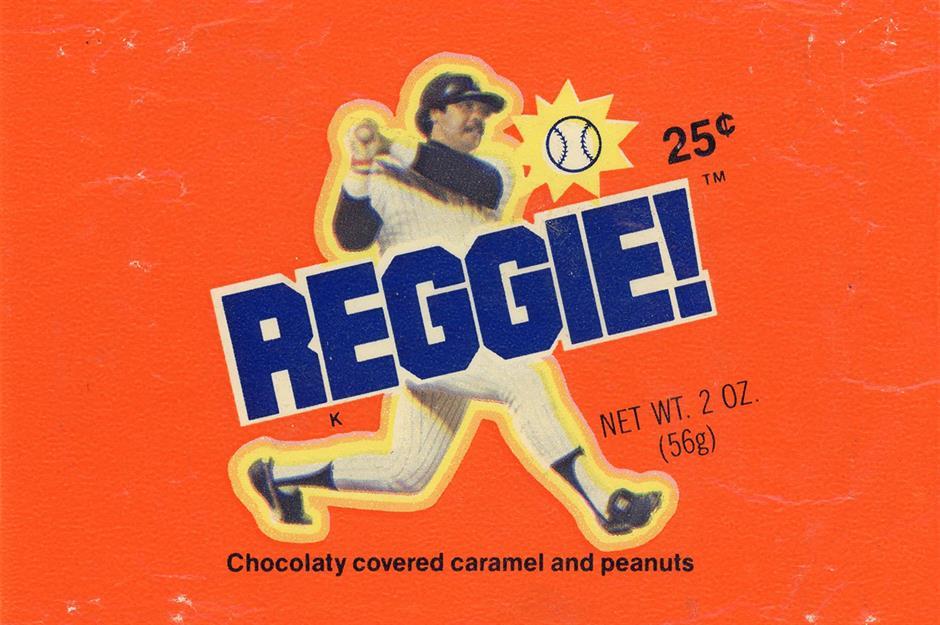
This short-lived candy bar, produced by Curtiss, only lasted from 1978 to 1981. Named after New York Yankees player Reggie Jackson, it featured a rich caramel center, roasted peanuts, and a chocolate coating. Although there have been rumors it will return, it hasn’t been available since the 1990s. However, old bars are still sometimes sold on eBay.
39. Space Food Sticks
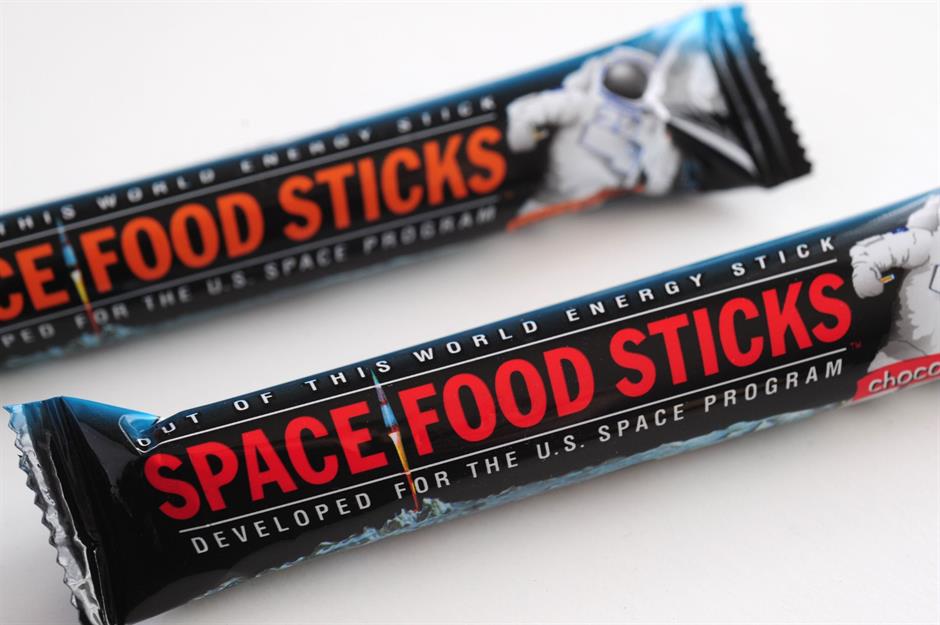
A candy bar that's been to the moon! Space Food Sticks were developed by Pillsbury and NASA and were sent into space with Neil Armstrong and Buzz Aldrin in 1969. It came in flavors like chocolate, caramel, and peanut butter. However, in the 1980s, it was taken off the North American market.
38. Alpine White
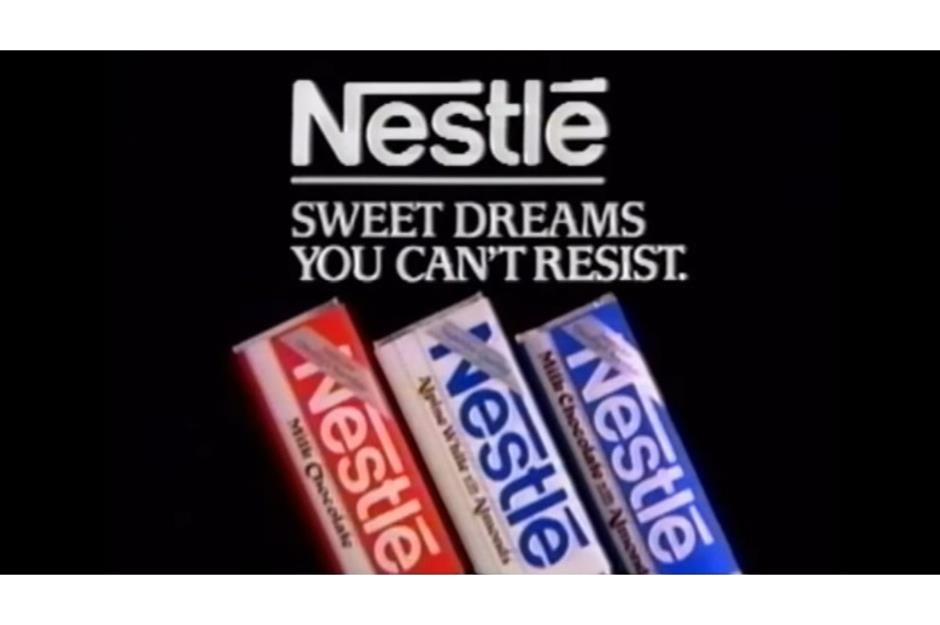
Creamy white chocolate is a common sight on grocery shelves these days, but that hasn’t always been the case. Alpine White was released in the 1940s and became the first mass-produced white chocolate bar in America. Packaged inside a blue and white wrapper, this Nestlé product featured milky white chocolate and almonds. It eventually came off the market in the 1990s, much to fans’ dismay.
37. Old Nick
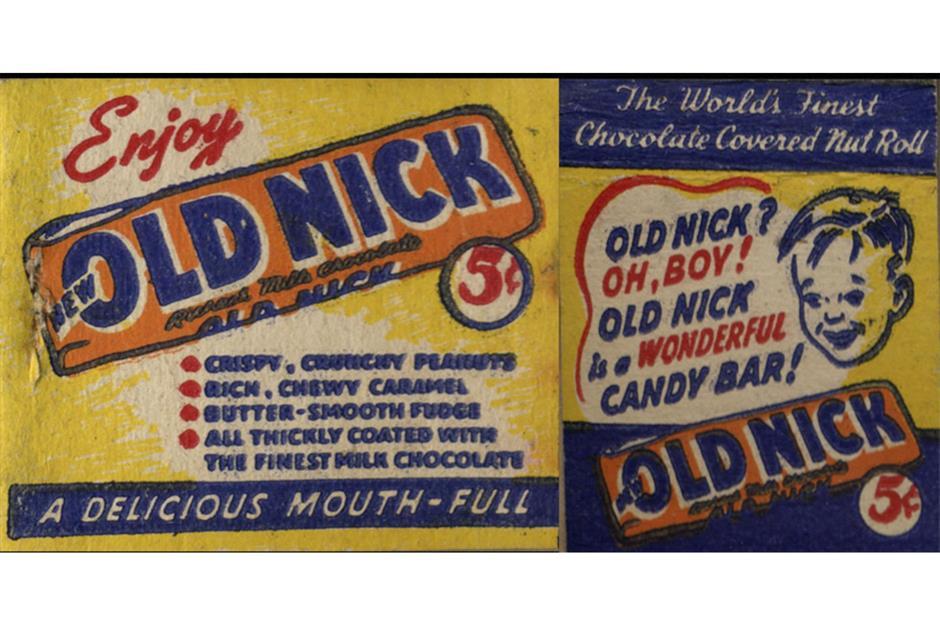
From the same producers as Bit-O-Honey, the Old Nick was launched by the Schutter-Johnson Company of Chicago in the 1940s. It was a bar of fudge and nuts coated in milk chocolate, whose adverts featured the tagline, 'American’s Favorite Candy Bar.' While the Bit-O-Honey is still available, the Old Nick was discontinued in the 1960s.
36. Mallo Cup
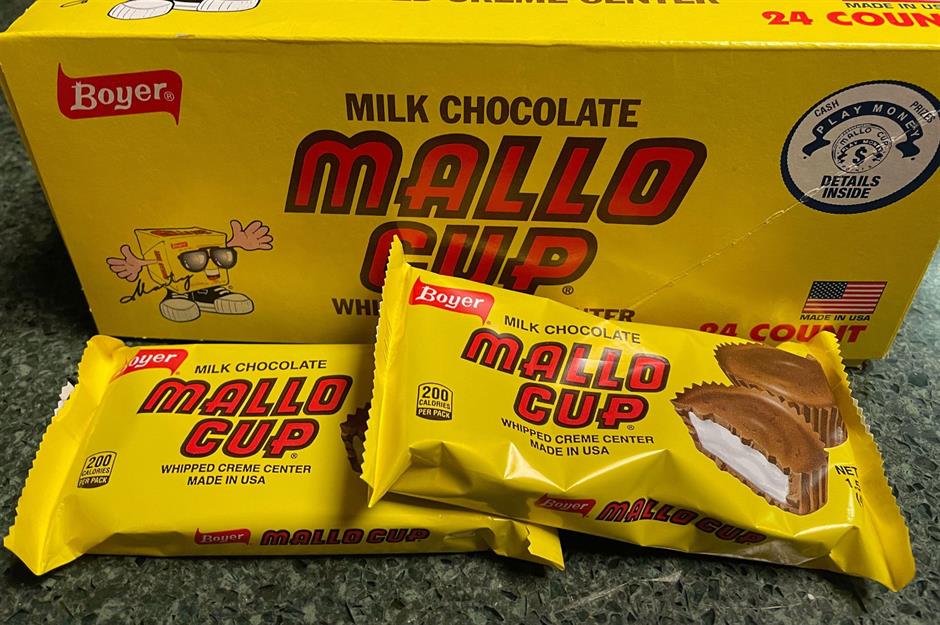
This delicious treat – made with a gooey, whipped creme center and milk chocolate cup–style coating – was first produced by the Boyer brothers in the 1930s, and almost a century later, continues to be a popular choice. Similar in style to Reese’s Peanut Butter Cups, the candy comes in a few varieties, including a familiar peanut butter option.
35. Coconut Grove
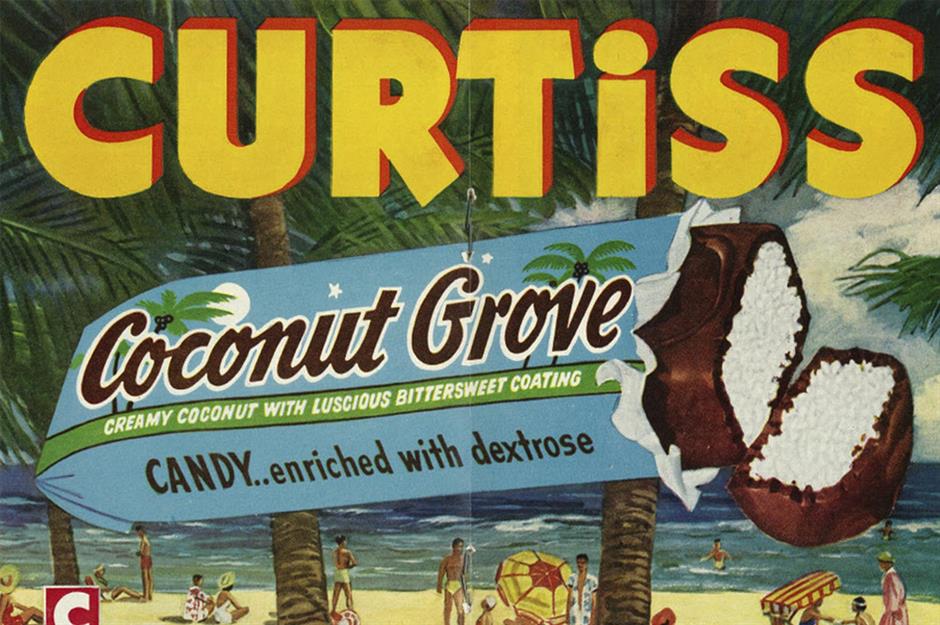
A creamy coconut bar with a bittersweet dark chocolate coating, the Coconut Grove was manufactured by the Curtiss Candy Company in the 1950s. Sadly, it's no longer available – instead, you'll have to opt for a Mounds bar to get your chocolate and coconut fix.
34. Good News
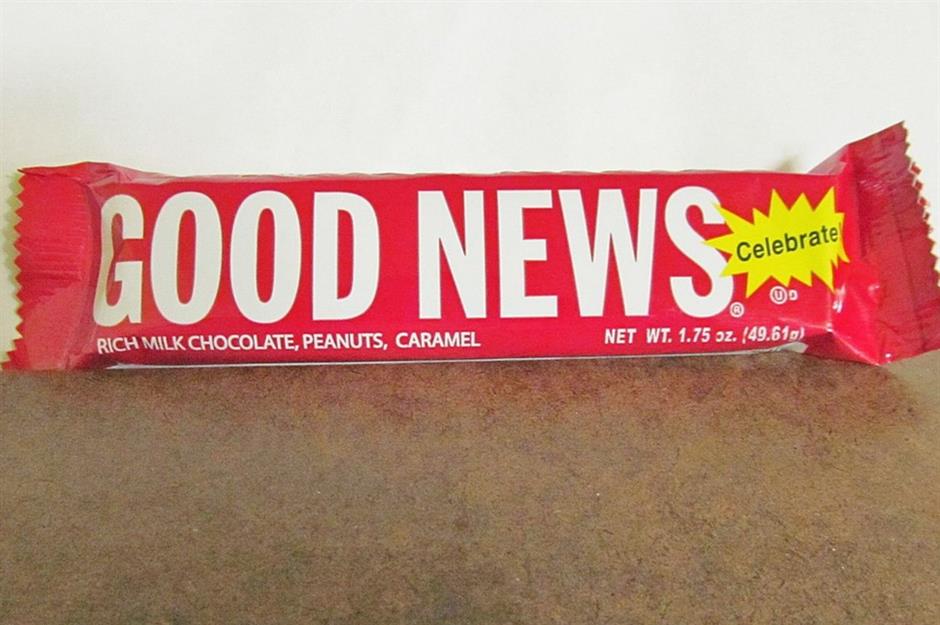
Consisting of gooey caramel and peanuts coated in milk chocolate, this niche candy bar was first made by Los Angeles candy company Adams & Brooks. Parents would hand the bars out to friends to celebrate the birth of a baby – hence the name – and, to this day, they usually come with a sticker that says either 'It’s a girl' or 'It’s a boy.' Curiously, it’s only sold widely in Hawaii these days, though you can buy a box from the candy maker’s website.
33. Marathon
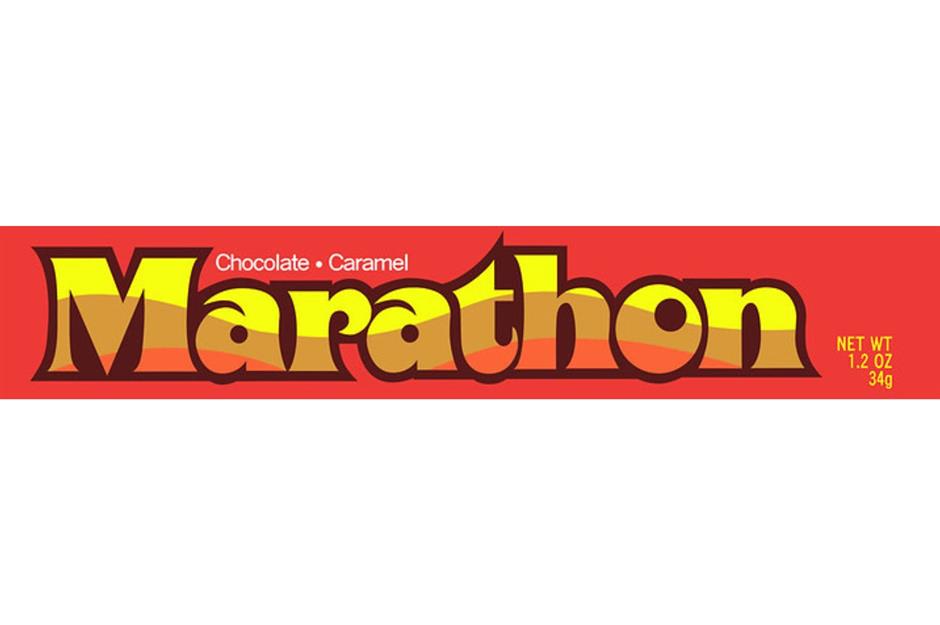
A popular choice in the 1970s, the Marathon bar consisted of a braided caramel base with a smooth milk chocolate coating. It was produced by Mars, and while it was chewy and delicious, its sticky caramel often got stuck in your teeth. Much to fans' dismay, the bar was eventually discontinued in 1981 and is yet to make a reappearance.
32. Rally
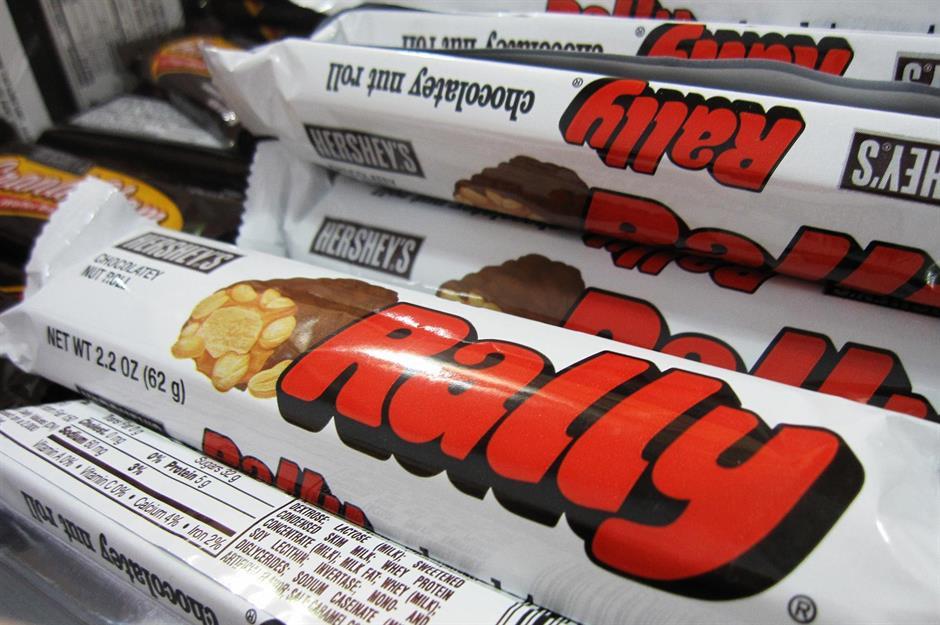
A 1970s throwback, this bar featured a fudge, caramel, and peanut center, finished with a milk chocolate coating. It was promoted as 'The Crowded Candy Bar' when The Hershey Company started advertising its products. After disappearing from shelves, it was briefly revived in 2013, but we'd like it to come back for good.
31. 5th Avenue
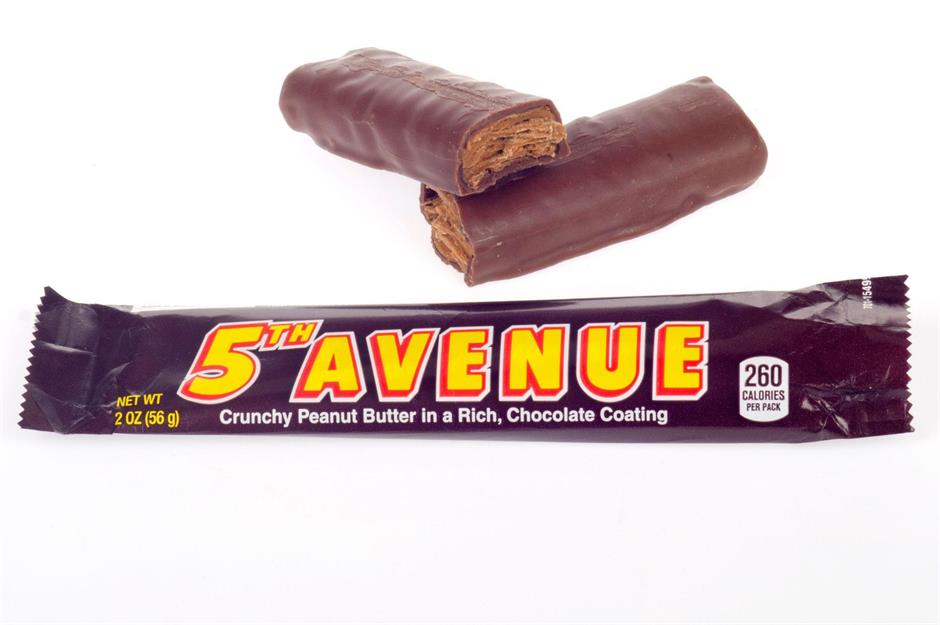
The 5th Avenue is a cross between a Clark Bar and a Butterfinger, with thin layers of crispy, toffee-like peanut butter covered in milk chocolate. It was created in 1936 by the H.B. Reese Candy Company – the makers of the iconic Reese's Peanut Butter Cups – and the name was an attempt to associate the candy with New York City’s most fashionable street. The original recipe was topped with almonds, but these were removed in the 1990s as a cost-saving measure.
30. Mr. Goodbar
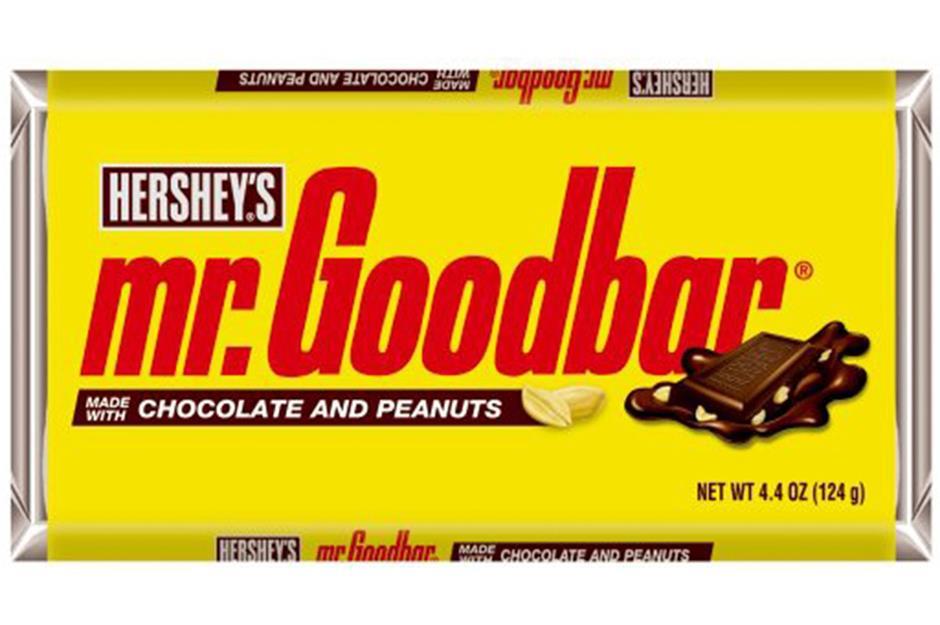
One of Hershey’s most enduring bars, Mr. Goodbar, made from roasted peanuts and milk chocolate, was introduced in 1925. It got its name during a taste test, when Mr Hershey apparently misheard someone saying, 'That’s a good bar' (he thought they'd said 'Mr Goodbar'). During the Great Depression, it had the nutritional edge over other candies, thanks to the inclusion of high protein peanuts.
29. Skor
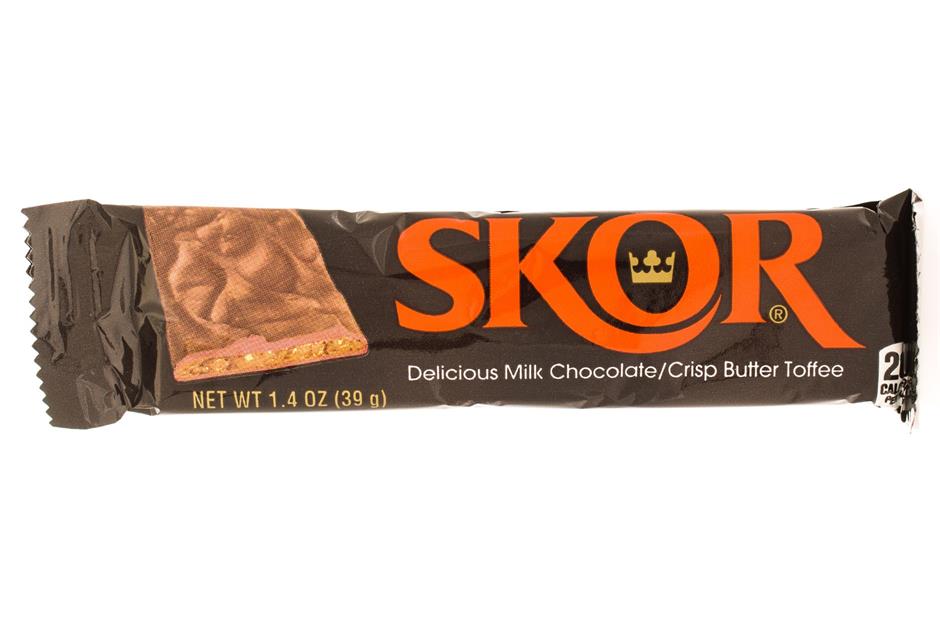
Initially released by The Hershey Company in 1981 to compete with the Heath bar (see number 24 on our list), this simple creation consists of a thin slab of butter toffee covered in smooth milk chocolate. Hershey acquired Heath in 1996, but the brand continues to market both bars despite their similarities; the only real difference is that Skor is slightly thinner and crispier. Curiously, skor means 'shoes' in Swedish, though skör – with an umlaut – means ‘brittle,’ which makes more sense for a candy bar name.
28. Summit
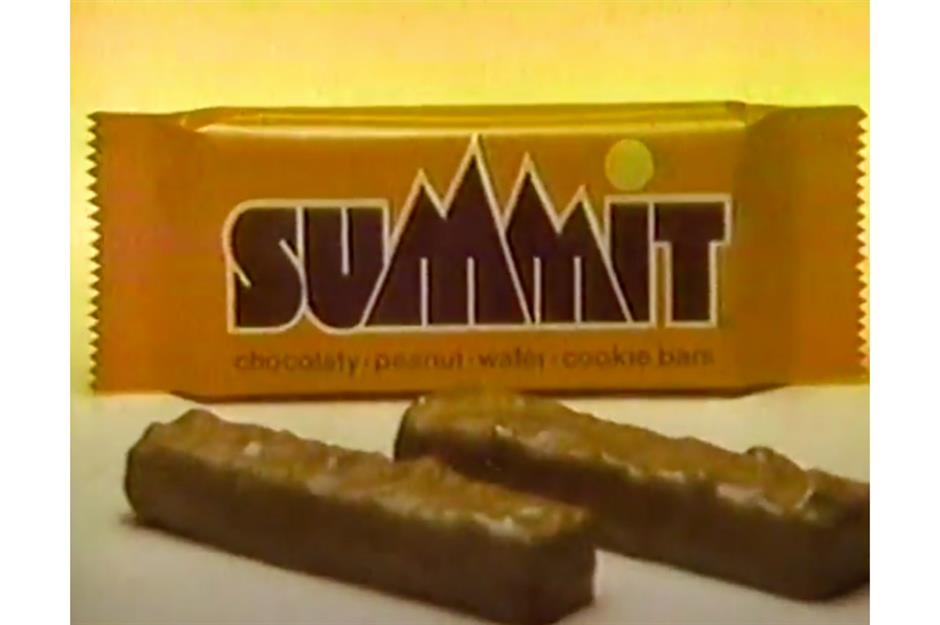
Released by Mars in 1977, the Summit bar was a fan favorite, garnering a loyal following for its wafer center, creamy top layer, crunchy peanuts, and milk chocolate finish. Originally positioned as a ‘cookie bar,’ the two-finger treat more closely resembled a candy bar. One factor leading to its downfall was its meltiness, with many suggesting it needed to be stored in the freezer to be fully enjoyed. As a result, the bar was discontinued in the mid-1980s.
27. Nut Goodie
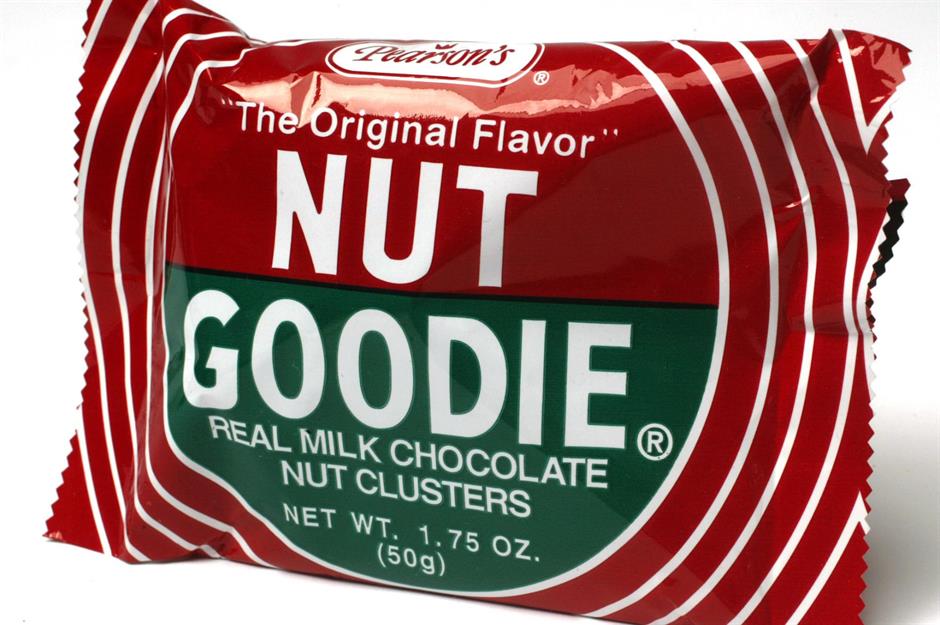
Part of the Pearson's Candy family, Nut Goodie has been lining grocery store shelves since 1912. Made in small batches in Saint Paul, Minnesota, it continues to be a loved treat today. The classic cluster-loaded bar features rich maple nougat, roasted peanuts, and milk chocolate. Its retro packaging continues to make it a popular choice all these years later.
26. Charleston Chew
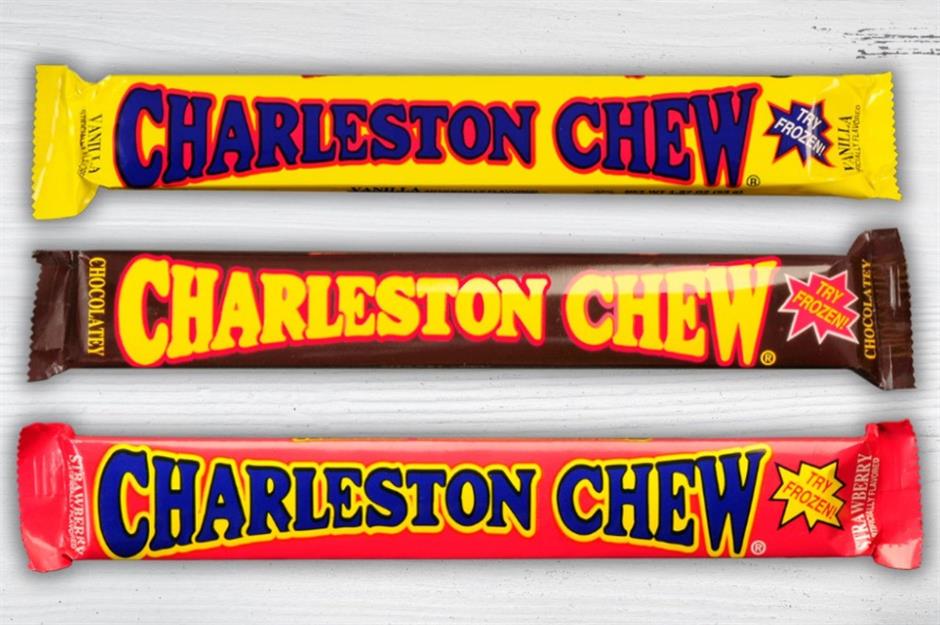
Named after the popular dance, vanilla nougat and milk chocolate Charleston Chews were created by the Massachusetts-based Fox-Cross company in 1922. Later, chocolate and strawberry flavors were released. The packaging encouraged you to freeze the bars and smash them on a hard surface so that they broke into little pieces. These days you can also get Mini Charleston Chews.
25. Clark Bar
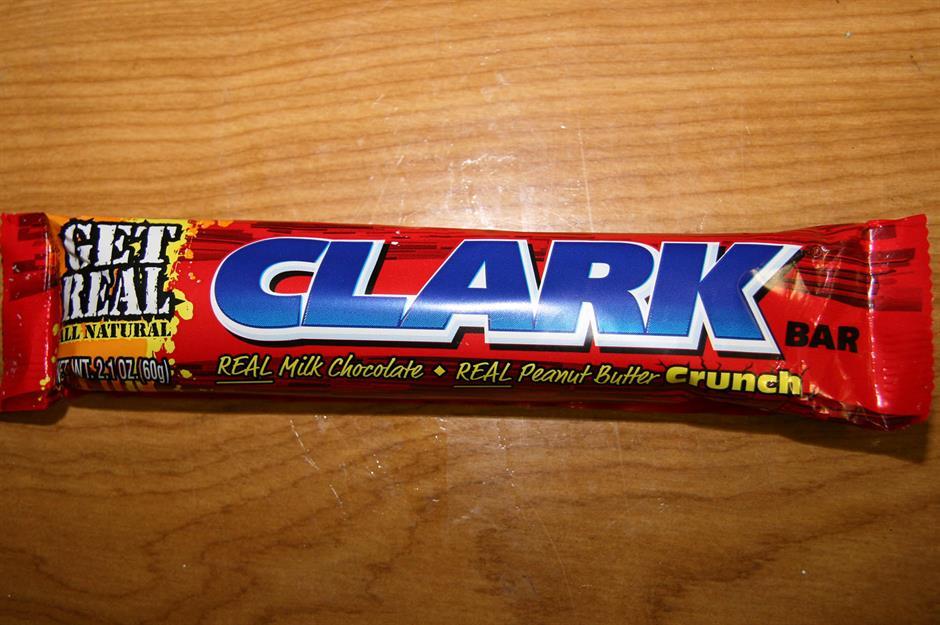
The Clark Bar has a honeycomb and peanut butter center and is finished with a chocolate coating. Introduced in 1917, it was purchased by candy manufacturers NECCO, but after the company's factory closed in 2018, it was nearly lost forever. Thankfully, Boyer Candy Company saved the day and bought the brand so the bar could continue to be enjoyed.
24. Heath
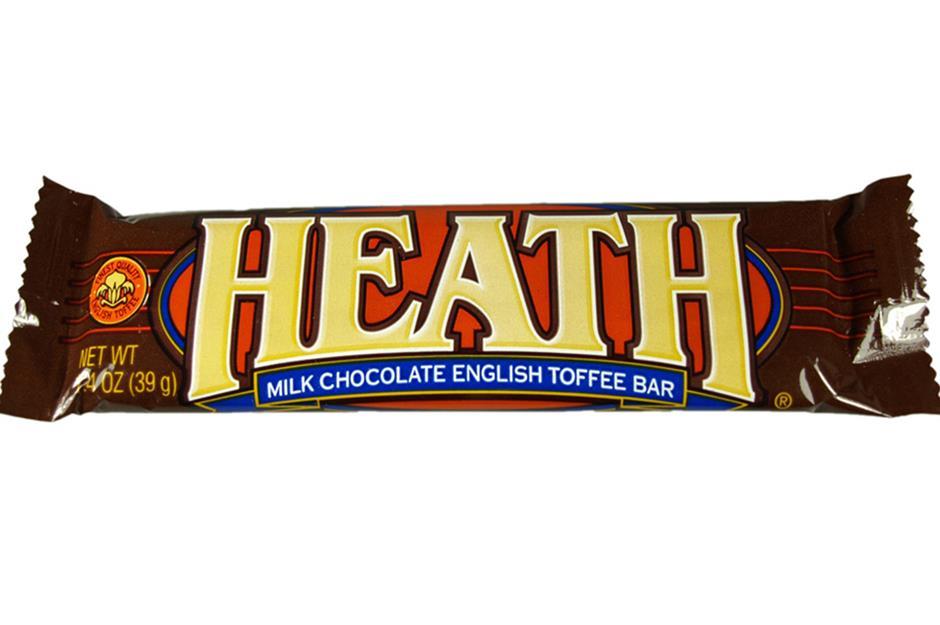
This crunchy toffee and milk chocolate bar was created by the Heath family at their store in Robinson, Illinois, in the late 1920s. For the first 20 years it was produced by hand and delivered to customers along with their milk. The business grew into a multi-million-dollar corporation and the family subsequently fell out over money.
23. Idaho Spud
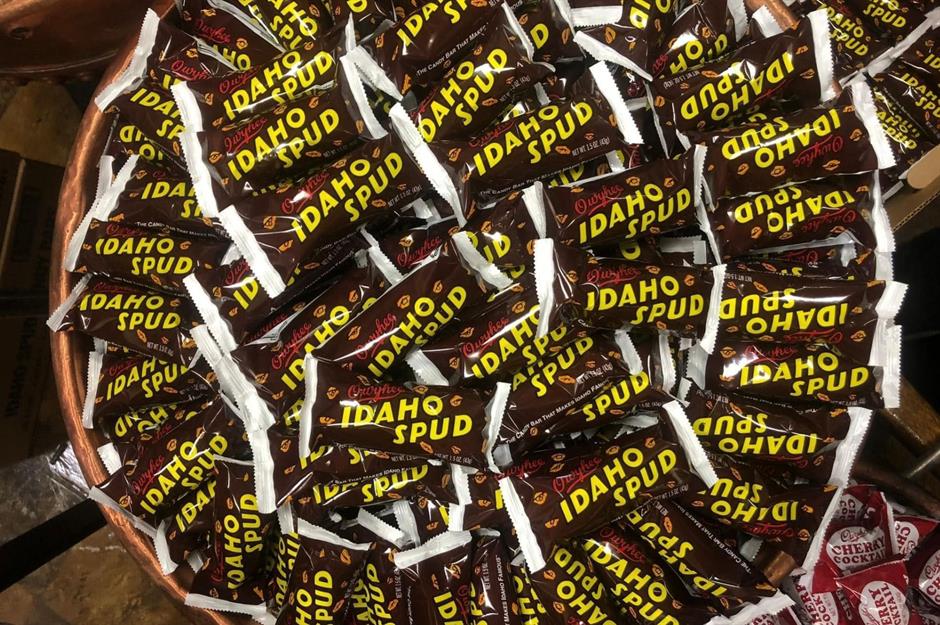
Bearing the slogan 'The Candy Bar That Makes Idaho Famous,' this quirky, potato-shaped bar has been made by The Idaho Candy Company since 1918 and has a cult following in the Northwestern United States. The treat consists of a cocoa-flavored marshmallow center covered with dark chocolate and sprinkled with coconut flakes. It was originally marketed as a ‘healthful’ candy bar, since it's made with agar agar instead of gelatin.
22. Krackel
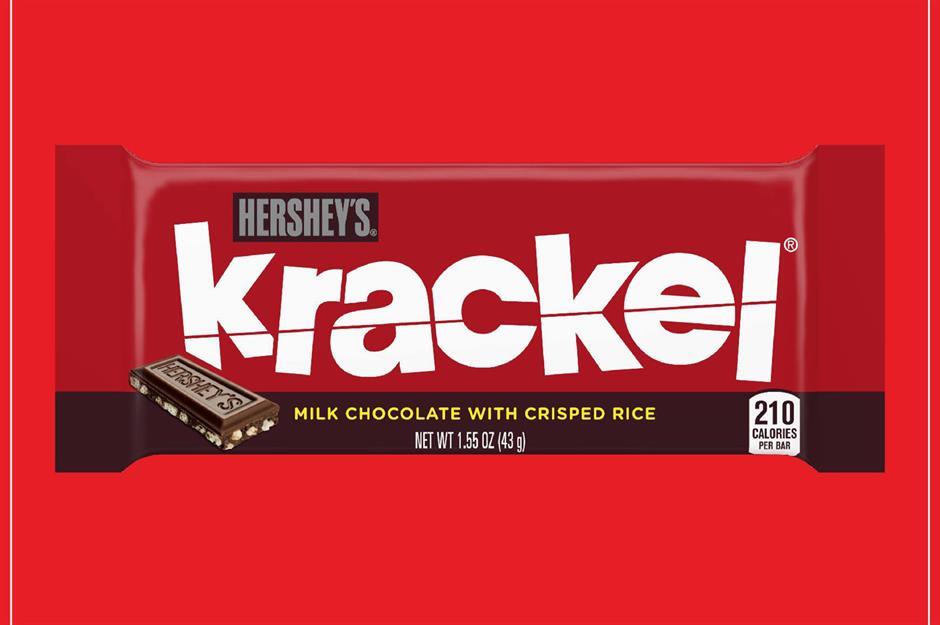
Another Hershey’s creation that has 'withstood the taste of time,' according to its advertising tagline, the Krackel bar was launched in 1938. Made from chocolate and crispy, puffed rice, many fans have noted its similarities to Nestlé's Crunch. The full-size version has since been discontinued, but you can still get your fix in miniature form.
21. Oh Henry!
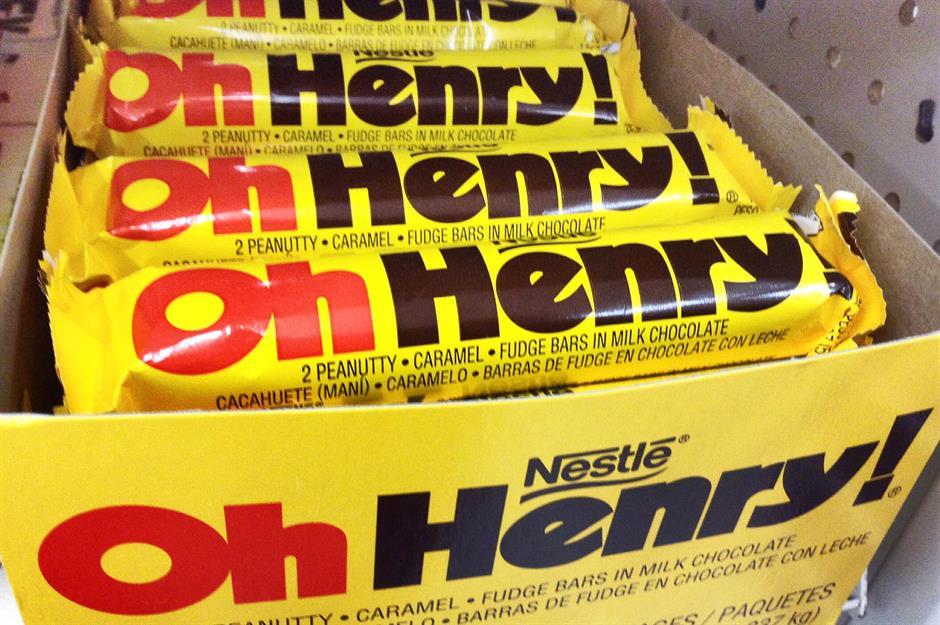
One of the nation's oldest candies, the Oh Henry! was first created by the Williamson Candy Company in 1920. It features layers of caramel and nougat like a Milky Way bar, but there are peanuts inside too, like a Snickers. It was first launched as a single, but now you get two fingers in a packet.
20. Zero
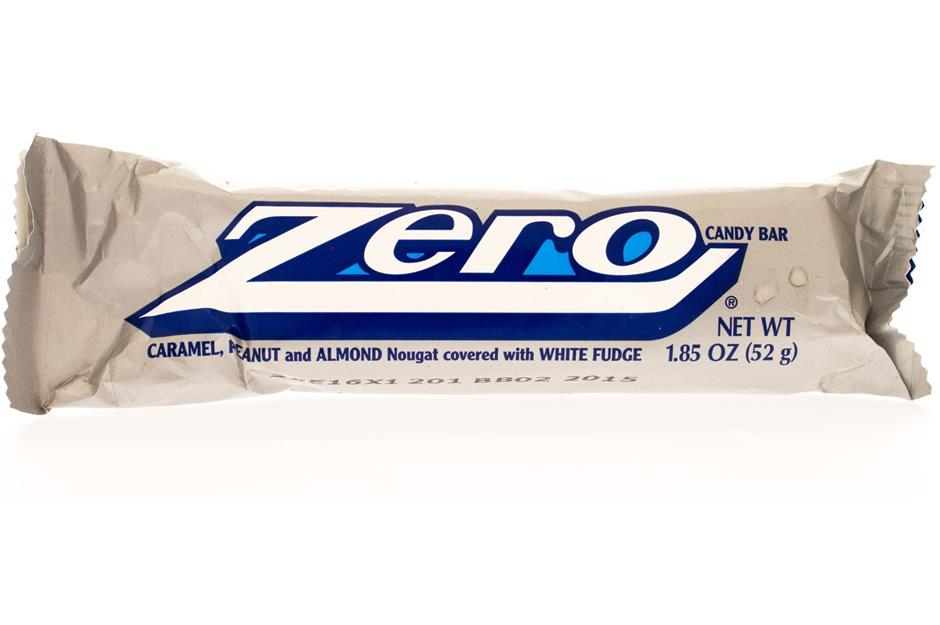
This underrated bar doesn’t get masses of attention, but we think it’s worth a second look – especially if you love white chocolate. First launched in 1920, the Zero features a combination of caramel, peanut, and almond nougat covered with a layer of white chocolate fudge. It kind of resembles a white chocolate Snickers, though the Zero bar predates Snickers by a decade.
19. Tootsie Roll
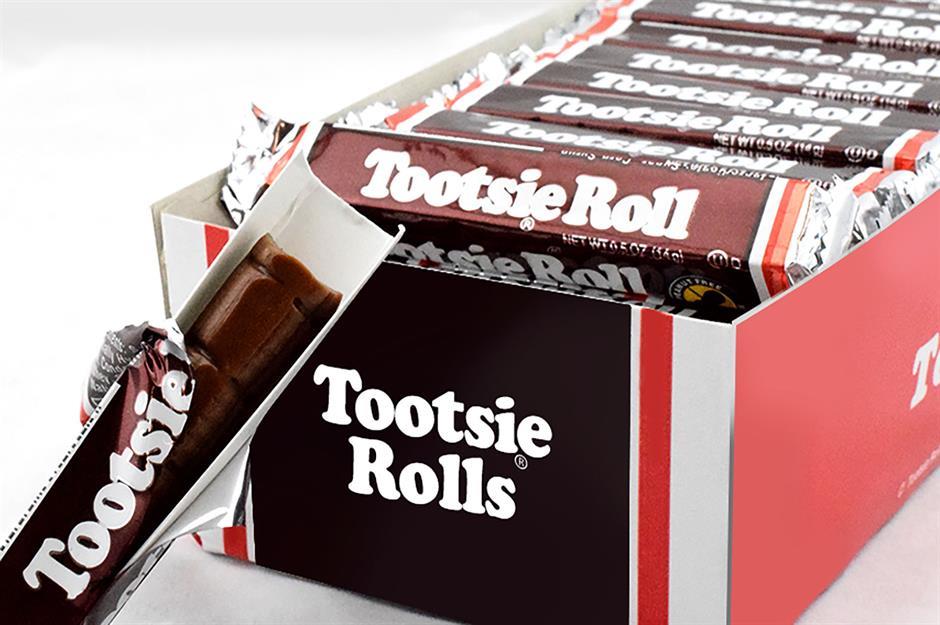
This chocolate-flavored taffy bar was invented by Austrian immigrant Leo Hirshfield and named after his daughter Clara, whose nickname was Tootsie. The recipe dates back to 1896 – and a key, but surprising, feature of the ingredients list includes the previous day's candy mixture. Initially they came in a single size and cost a penny, but now different varieties are available.
18. Mounds

Almost indistinguishable from an Almond Joy (number 11 on our list), Mounds is its older, richer sibling. Created by the Peter Paul Manufacturing Company in 1921, the bar features a sweet coconut center and a dark chocolate coating. It comes in red packaging and is now sold by Hershey’s.
17. 100 Grand
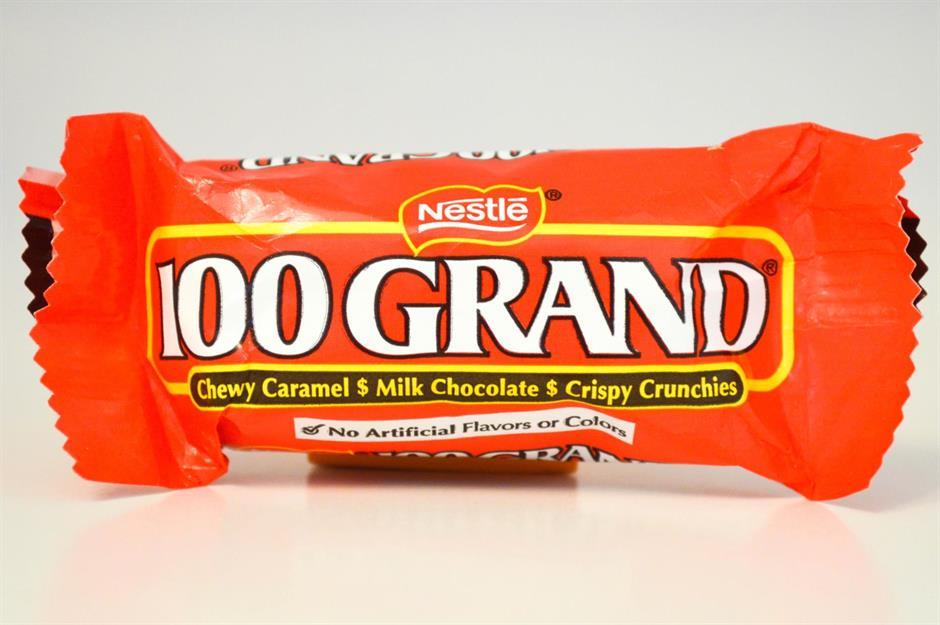
When the 100 Grand bar first came out in the 1960s, it was called the $100,000 Bar – and radio DJs played pranks on listeners, offering '100 grand' for answering a question correctly. However, after one upset listener found out she was receiving the puffed rice and caramel chocolate bar instead of a cash prize, a Kentucky radio station was sued in 2005.
16. PayDay
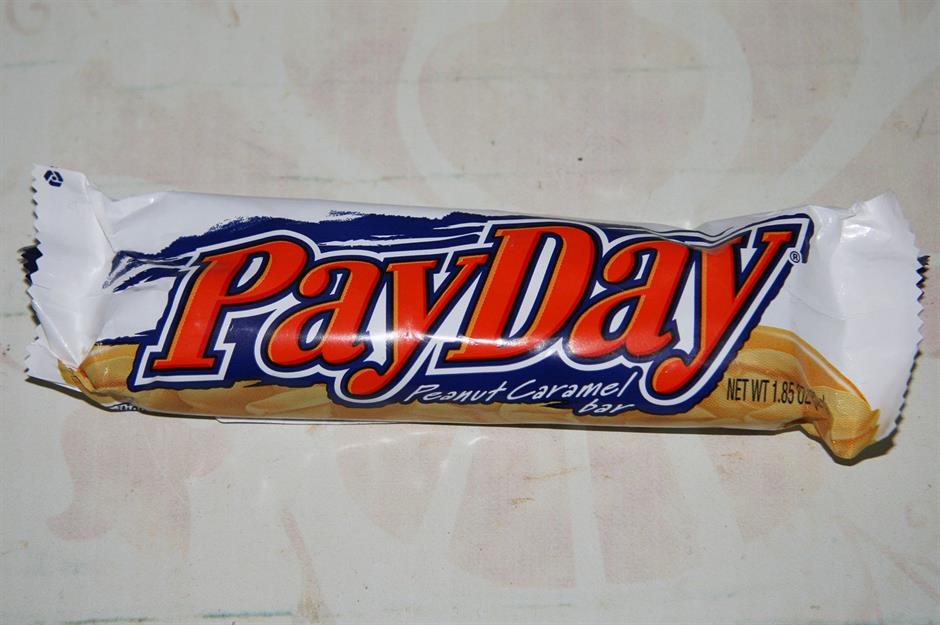
A delectable combination of sweet and salty, the crunchy, caramelly PayDay was invented in 1932 by Frank Martoccio of the F.A. Martoccio Macaroni Company – and it has survived for close to a century. It became part of The Hershey Company in 1996, who also tried out spin-offs including a bar with honey and one with chocolate.
15. Crunch
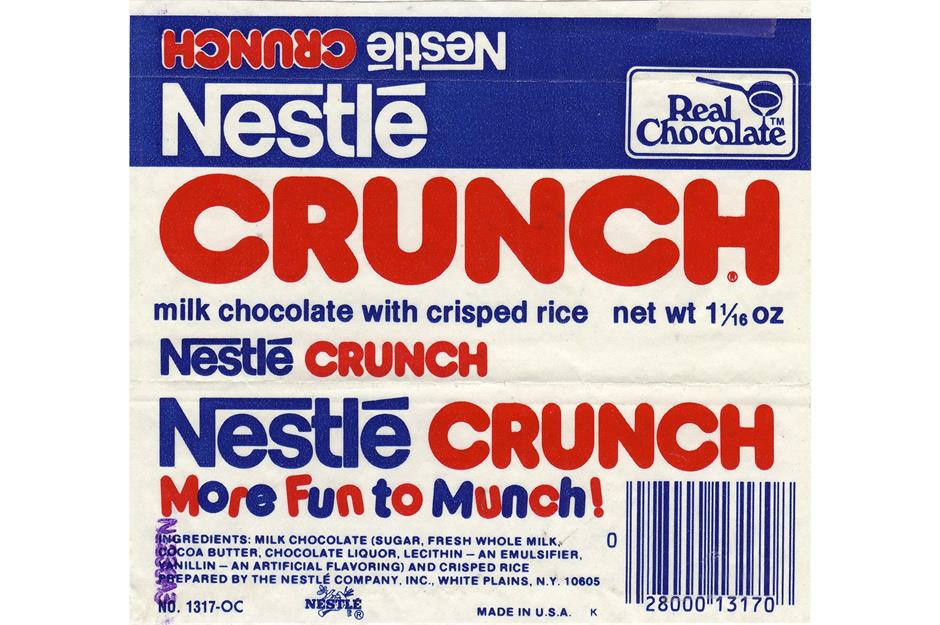
This much-loved milk chocolate and crisped rice bar was introduced by Nestlé in 1938. It's had lots of cute taglines over the years, including 'More fun to munch!' But, behind the packaging, it’s almost identical to the Krackel bar introduced by Hershey’s the same year. Crunch bars made it to the UK in 1965, and they're still on sale on both sides of the Atlantic today.
14. Chunky
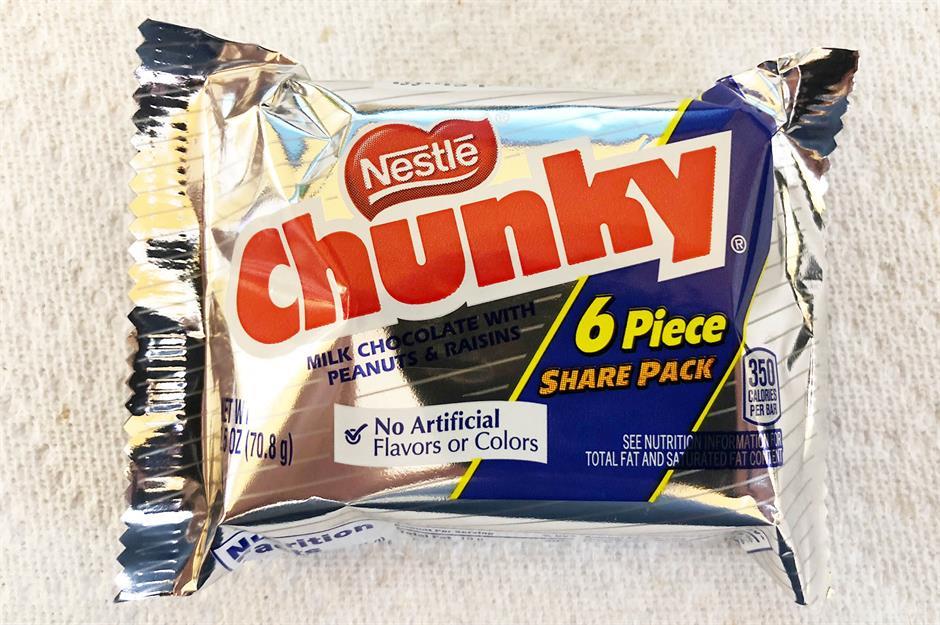
This four-segment chocolate bar was introduced by New York confectioner Philip Silvershein in the 1930s. Back then it contained cashews, raisins, and Brazil nuts, though the recipe was simplified to peanuts and raisins when Nestlé bought the brand in 1984.
13. Whatchamacallit
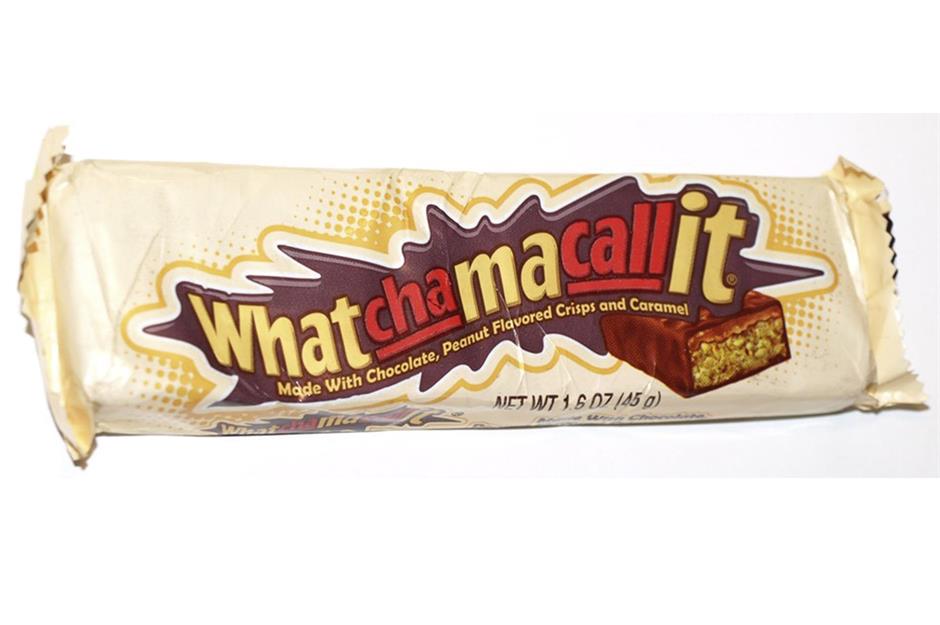
If you were lucky enough to try the Whatchamacallit in the late 1970s when it was first produced, you’ll remember it consisted of peanut-flavored crisped rice covered in chocolate. In 1987, Hershey’s added a layer of caramel – and in 2009, the company introduced the Thingamajig, which contained peanut butter crème and cocoa crisps.
12. 3 Musketeers
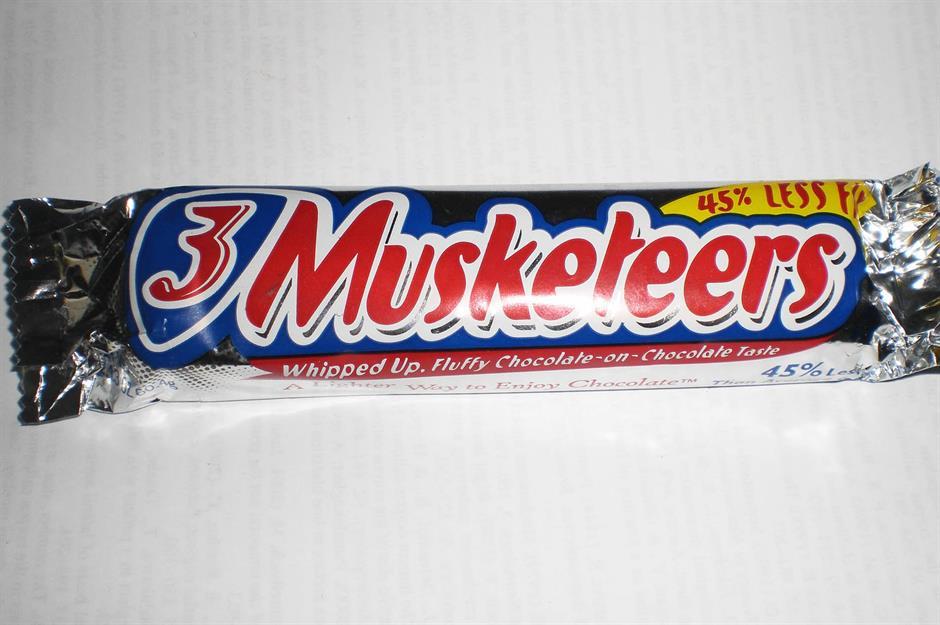
Have you ever wondered what this chocolate-covered nougat candy has to do with the 19th-century French novel The Three Musketeers? When it was introduced by Mars in 1932, you got three different flavored sticks – chocolate, vanilla, and strawberry – in one packet. Sadly, nowadays you just get one.
11. Almond Joy
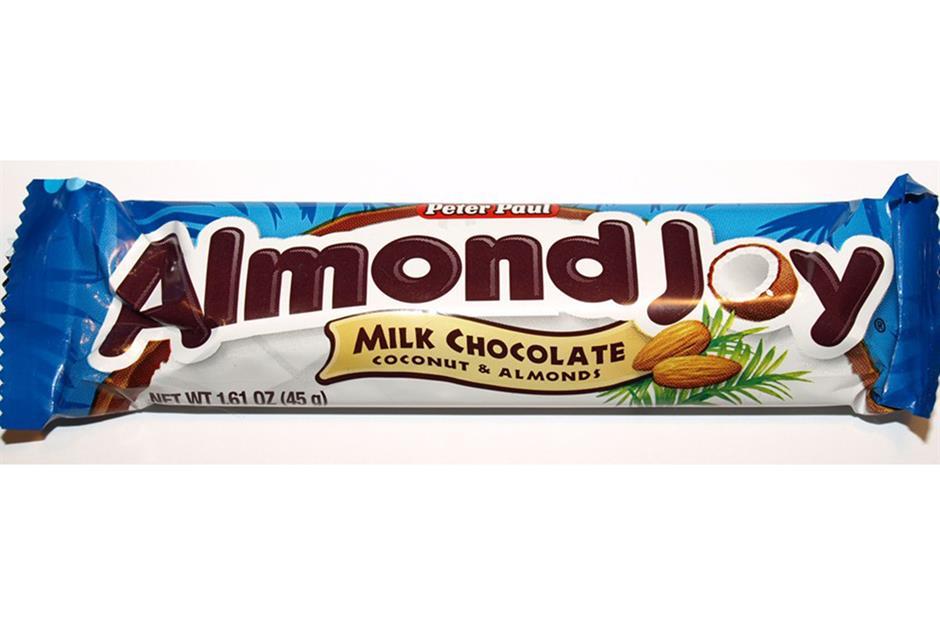
Mounds' younger sibling, Almond Joy has almost identical packaging – except it's blue, rather than red – and was launched two decades later, in 1946. It has the same coconut center but is topped with almonds and coated in milk chocolate. It is also now sold by Hershey’s.
10. Take 5

Named after its five ingredients (milk chocolate, peanuts, caramel, peanut butter, and pretzels), the Take 5 first appeared in 2004. In 2016, the bar was relaunched with the help of students, who designed a new wrapper and logo as part of its comeback campaign. Crispy and crunchy, it's hard to beat.
9. Milky Way
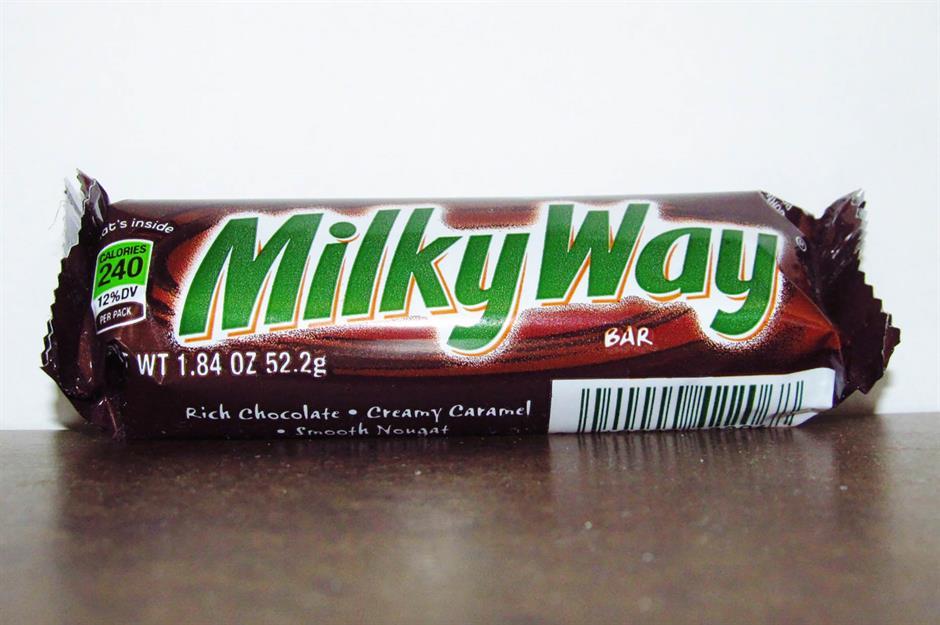
The candy bar inspired by the soda fountain classic, the Milky Way claimed to have 'more malted milk content than a soda fountain double malted milk!' Launched by Mars in 1923, they were initially huge, weighing 3oz (in comparison to today’s 1.8oz bars). Thankfully the delicious treat is still available.
8. Hershey’s Milk Chocolate

'The Great American Chocolate Bar,' Hershey’s Milk Chocolate is the candy manufacturer’s flagship product, launched in 1900. It took a lot of trial and error to create the formula, as chocolate recipes were a secret closely guarded by the Swiss at the time. Eight years later, Hershey’s Milk Chocolate with Almonds came out.
7. Butterfinger
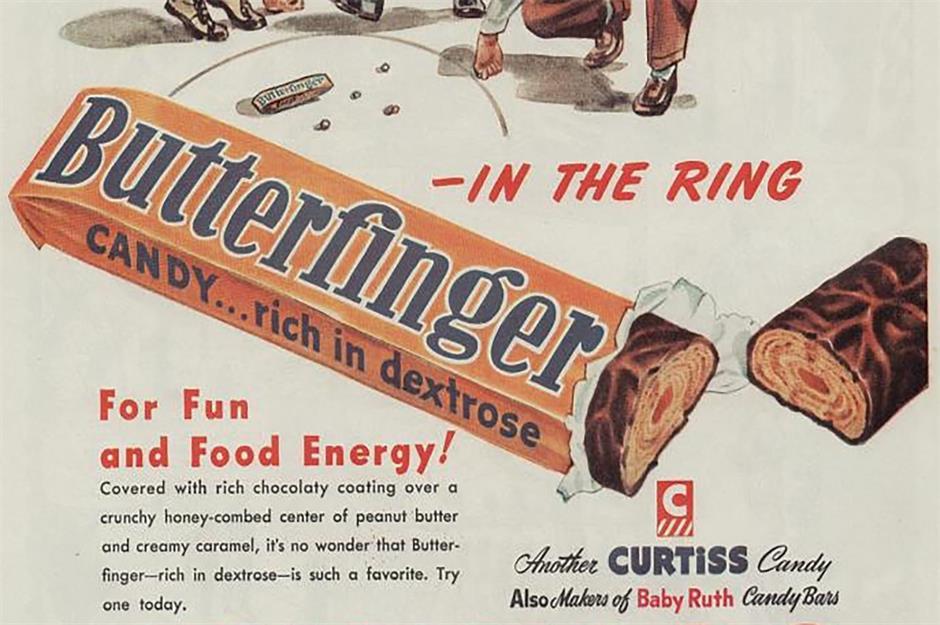
This 'crispety, crunchety, peanut-buttery!' bar, with a honeycomb, peanut, and caramel center and chocolate coating, was launched by the Curtiss Candy Company in 1923. It’s best known for its humorous 1990s adverts featuring Bart Simpson, which aired around the time Nestlé bought the brand.
6. Dove
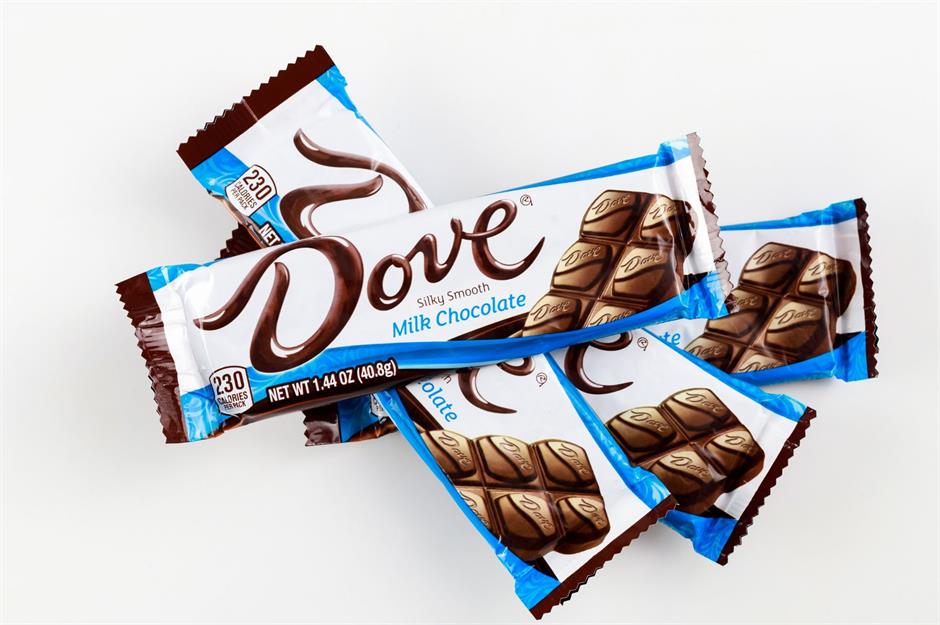
One of the world’s bestselling chocolate bars, Dove is known as Galaxy outside of the US and is loved for its silky smooth texture and extra-creamy taste. The bar was invented in the 1930s, when Greek American Leo Stefanos started selling Dove brand ice cream bars from his Dove Candies & Ice Cream stores around Chicago. Distribution outside of the city only started in 1985, but the bar proved to be a quick hit; by the following year, the company was acquired by Mars.
5. KitKat
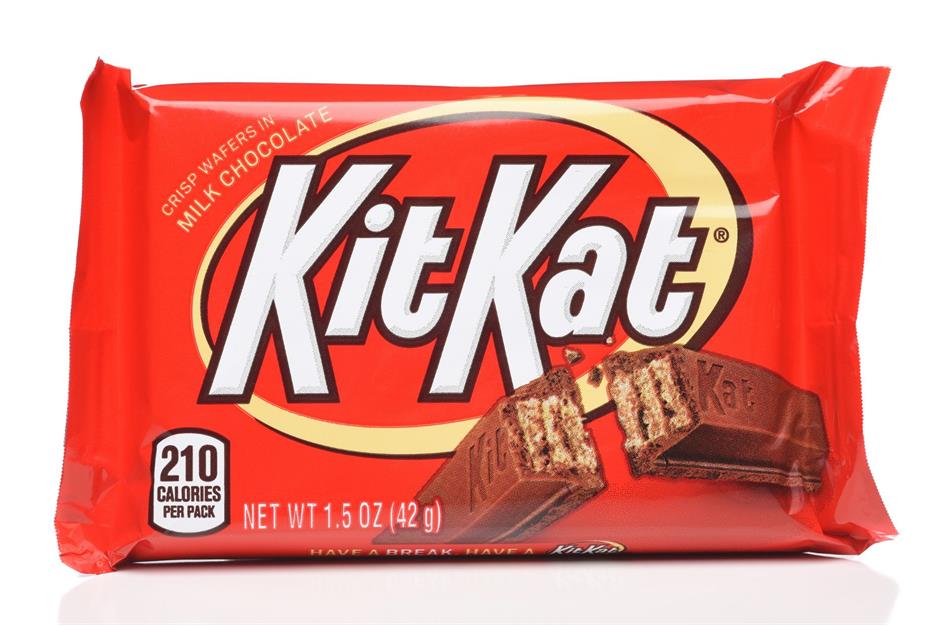
First launched in the UK in 1935, this beloved candy bar eventually crossed the Atlantic in 1970. Renowned for its two- and four-finger bars, KitKat has a worldwide reputation for its savvy styles and unusual flavor combinations, including everything from birthday cake to cappuccino. It's produced by Nestlé everywhere except the US, where it’s licensed by Hershey’s.
4. Twix
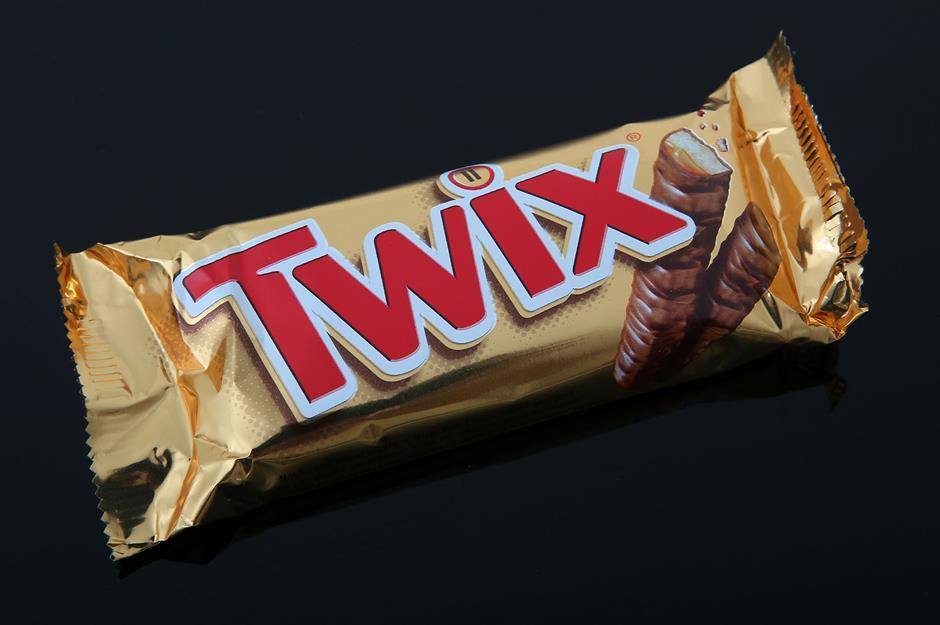
Originally launched in the UK in 1967, the Twix made it to the United States in 1979. It features two biscuit fingers coated in caramel and milk chocolate and is instantly recognizable by its gold packaging. The crunchy, chocolatey bar is now one of the country’s favorites.
3. Baby Ruth
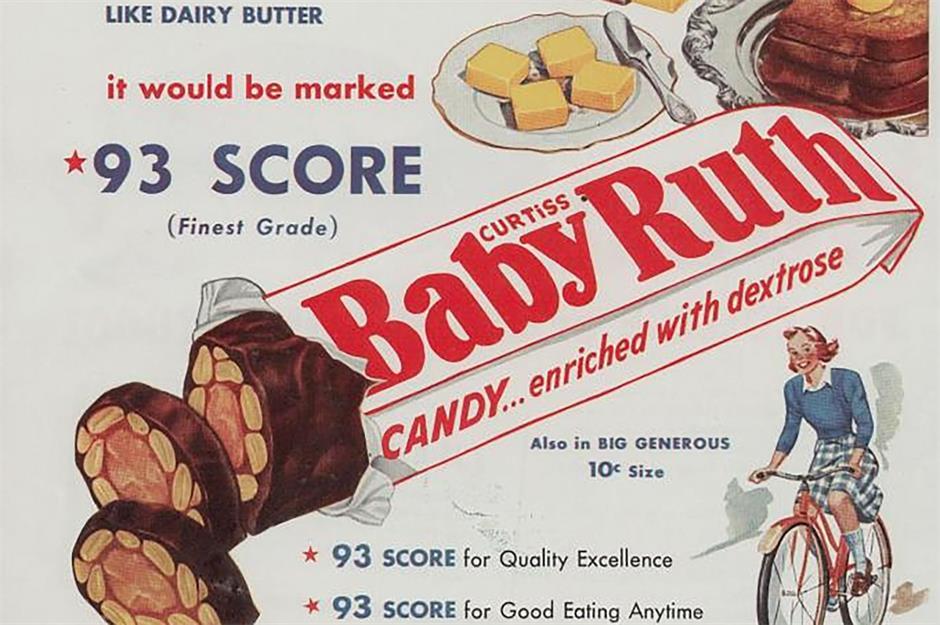
Originally named Kandy Kake, this famous bar was reformulated and renamed Baby Ruth in 1921. Most people believe that baseball player Babe Ruth inspired the name – but the Curtiss Candy Company claims the bar was named after President Grover Cleveland’s daughter. A tasty combination of peanuts, caramel, and chocolate-flavored nougat, Baby Ruth is now owned by Ferrero.
2. Reese’s Peanut Butter Cups
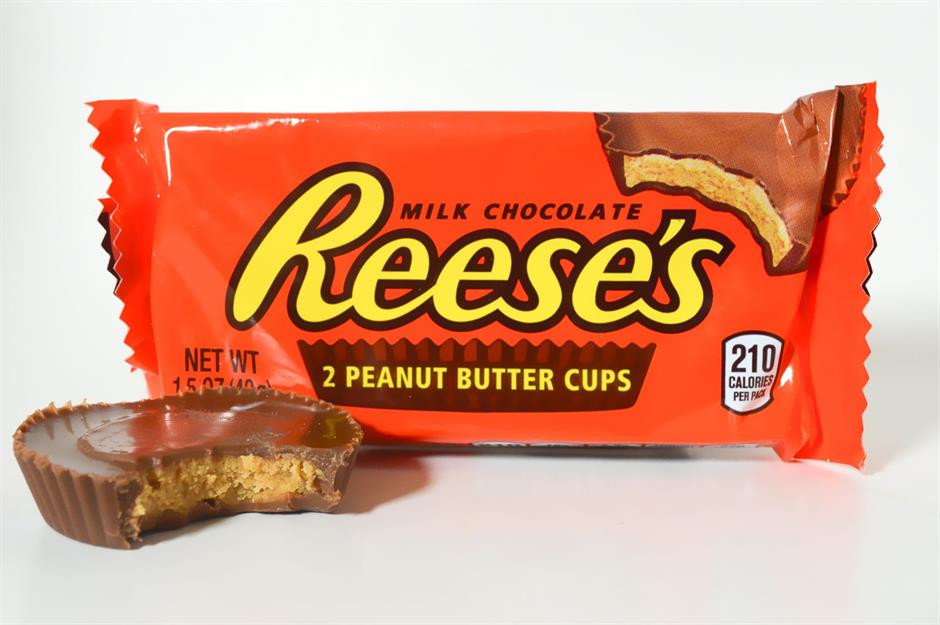
An American candy classic, these melt-in-the-mouth, chocolate-smothered cups prove that sometimes the best ideas are the simplest. They were originally created in 1928 by H. B. Reese, a former dairy farmer and shipping foreman for Milton S. Hershey. His departure to launch his own candy business caused quite the scandal at the time, but things came full circle when Hershey eventually bought Reese's in 1963. Today, Peanut Butter Cups are a global sensation with endless variations of size and flavor, including a delicious PB&J option.
1. Snickers

Everyone’s favorite nougat, peanut, and caramel chocolate treat was launched by Mars in the US in the 1930s and was named after its founders' racehorse, Snickers. In 2012, it was the most popular candy bar in the country, with 15 million produced every day to keep up with demand and global annual sales topping an incredible $3 billion.
Comments
Be the first to comment
Do you want to comment on this article? You need to be signed in for this feature